The mid-range TV segment is expanding rapidly, and the TCL C75B demonstrates that you can get really solid equipment in this price range. This model has been clearly designed with gamers in mind – the HDMI 2.1 port offers ample scope, providing VRR, ALLM, as well as impressive 144 Hz refresh rates in 4K (or 240 Hz in Full HD), which will surely satisfy both gaming and sports fans. Operating the TV is enjoyable and intuitive, mainly thanks to the Google TV system. Although you may encounter slight stutters, the wealth of available applications and features compensates for that – practically everything we need is at our fingertips or even accessible by voice if we wish to converse with the remote in Polish. As for picture quality, the TCL C75B also performs well. Thanks to its VA panel, it boasts quite good contrast, and the presence of Dolby Vision allows for enjoyable HDR effects, even if the brightness isn't groundbreaking. Of course, it is not equipment without flaws – despite the fast panel, there is some motion blur, and the lack of traditional features (like USB recording) may disappoint some users. Nevertheless, in its price category, the C75B is a very attractive option, especially for those looking for a screen designed for high-level gaming.
- Matching (Score)
- Our verdict
- TV appearance
- Where to buy
- Contrast and black detail
- HDR effect quality
- Factory color reproduction
- Color reproduction after calibration
- Smoothness of tonal transitions
- Image scaling and smoothness of tonal transitions
- Blur and motion smoothness
- Console compatibility and gaming features
- Input lag
- Compatibility with PC
- Viewing angles
- TV efficiency during daytime
- Details about the matrix
- TV features
- Apps
- Playing files from USB
- Sound
TCL C75B vs Philips PUS8500
Direct compare
PUS8500 / PUS8560 / PUS8510 / PUS8600

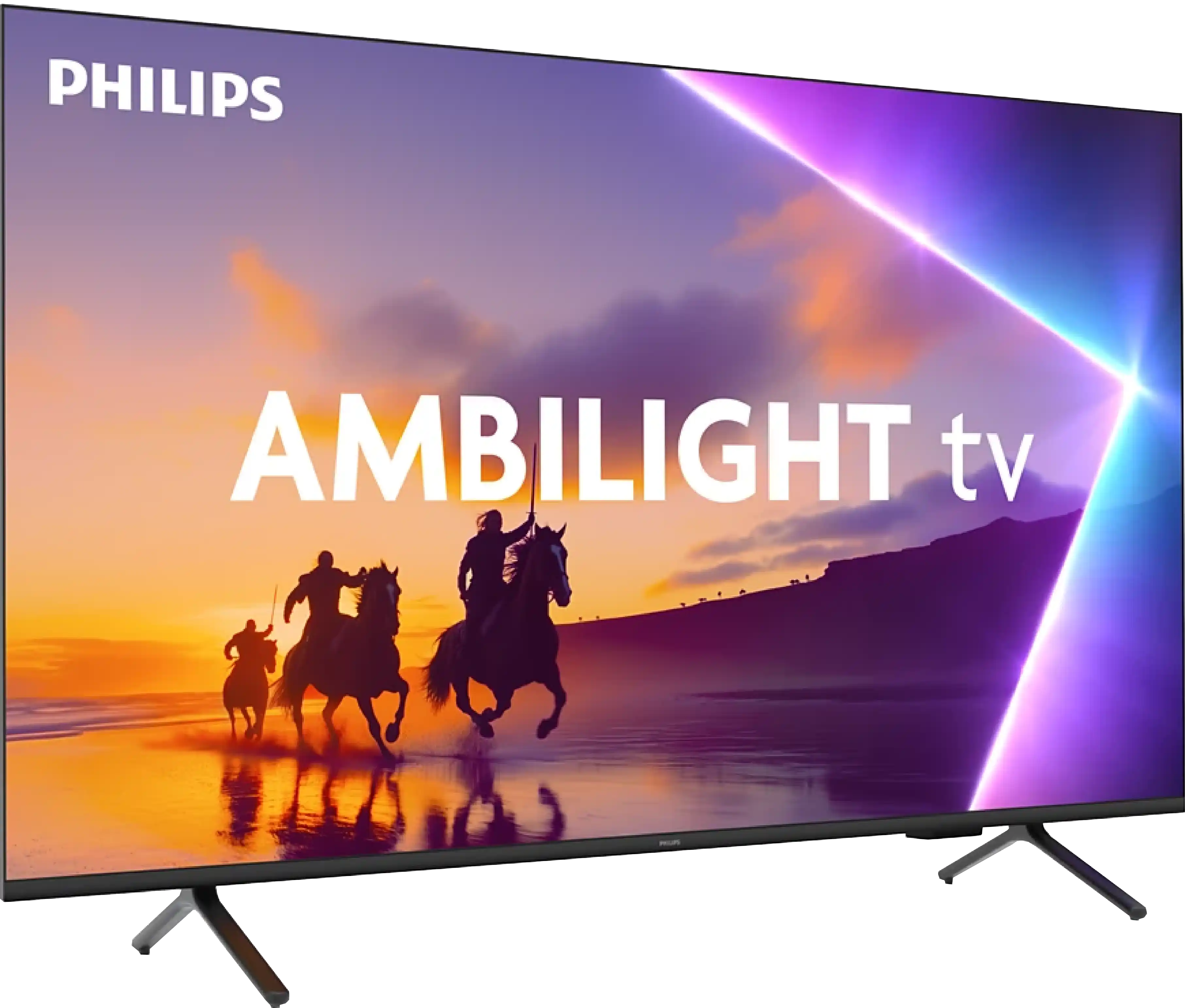
Panel type: LCD VA
Resolution: 3840x2160
System: Google TV
Model year: 2024
Complete the survey to find out the result

Panel type: LCD VA
Resolution: 3840x2160
System: Titan OS
Model year: 2025
Complete the survey to find out the result

Overall rating
6.7
5.6
Movies and series in UHD quality
6.3
5.4
Classic TV, YouTube
6.0
6.1
Sports broadcasts (TV and apps)
6.2
5.2
Gaming on console
8.4
6.7
TV as a computer monitor
7.6
5.6
Watching in bright light
4.9
4.9
Utility functions
7.7
4.9
Apps
9.6
4.6
Sound quality
6.6
6.2
Complete the survey to find out what fits your preferences
Advantages
Great television for gamers - HDMI 2.1: VRR, ALLM, Game Bar
Very high refresh rate - 240Hz in FullHD and 144Hz in 4K
Very low input lag - 9ms
Advanced operating system - GoogleTV
Support for Dolby Vision, HDR10+
Decent blacks thanks to the VA panel
Ambilight System
High native contrast - VA panel
Low input lag
Basic gaming features: ALLM and VRR
Full support for audio formats: Dolby Atmos and DTS
Backlit remote control with numeric keypad
Disadvantages
Limited brightness (350 cd/m²), making it difficult to watch in bright rooms
Issues with the smoothness of the Google TV system
Lack of traditional features such as USB recording or PIP
Average response time of the panel causing motion blur
Average panel brightness
The TitanOS system seems unfinished (some features do not work, missing applications)
Infrared remote control
Issues with font readability (PC)
Our verdict
Ambilight, as this is what we need to start with, is the biggest reason why it's worth buying the PUS8500. The three-sided backlighting of the television looks fantastic, especially in the evening. It creates an atmosphere, masks contrast shortcomings, and makes watching a film simply more enjoyable. Even if the black levels aren't perfect, the native VA panel offers decent performance at high contrast. Additionally, there’s quite a good input lag and several features for gamers such as ALLM and VRR. Although HDMI 2.1 and a 120Hz panel are absent, playing casually should be a pleasure. Especially since it feels responsive and without delays. Let’s also mention the full support for audio formats – both Dolby Atmos and DTS are included, so soundbar owners can also rejoice.
However, we won't sugarcoat it – this is still a budget television, and at times it’s clearly evident. The brightness is average – not weak enough to prevent viewing, but on an exceptionally sunny day, watching without curtains can be problematic. Nevertheless, in our opinion, the biggest disappointment of the PUS8560 is the Titan OS operating system. Despite the fact that the system debuted some time ago, certain functions simply refused to work – for instance, screen mirroring from a phone despite the manufacturer claiming that such a feature is present. There are fewer apps than in the competition, and the system itself operates rather clumsily. Generally, while it does have some features, it evidently lacks refinement.
Of course, this isn’t a television meant to compete with top models. But if someone is looking for something simple, with a great atmosphere provided by the Ambilight system, it is quite a fair proposition. You just have to know what to expect and accept the numerous compromises present here.
TV appearance




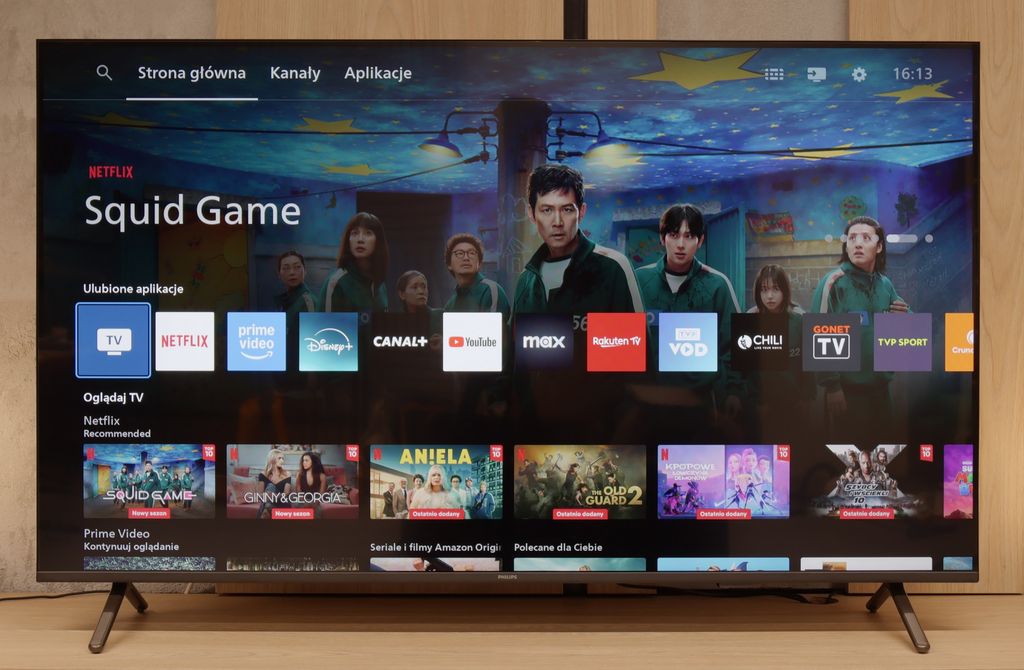
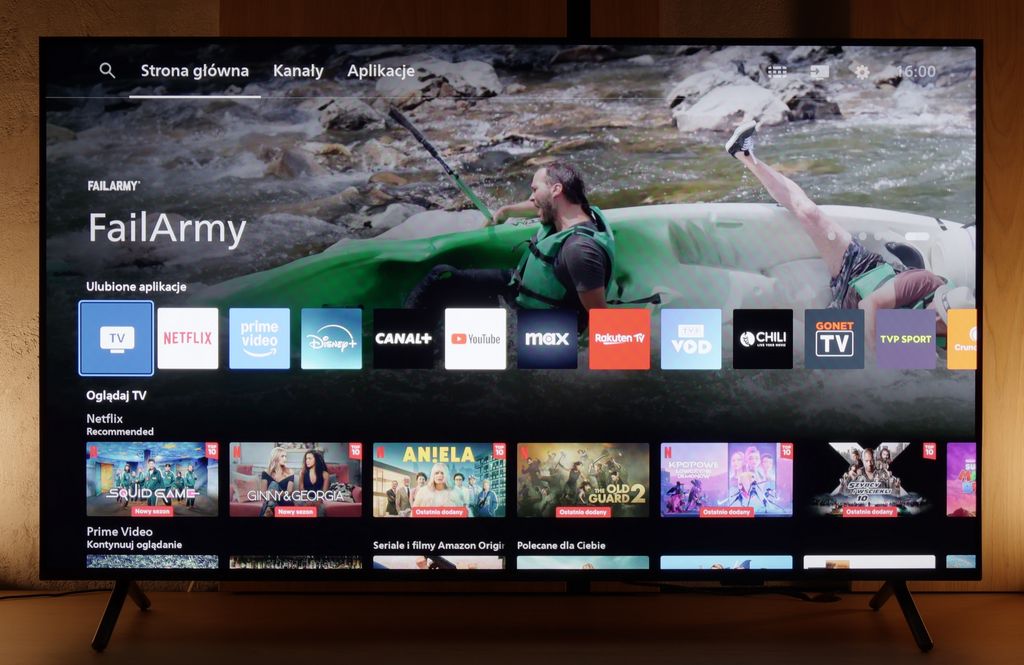
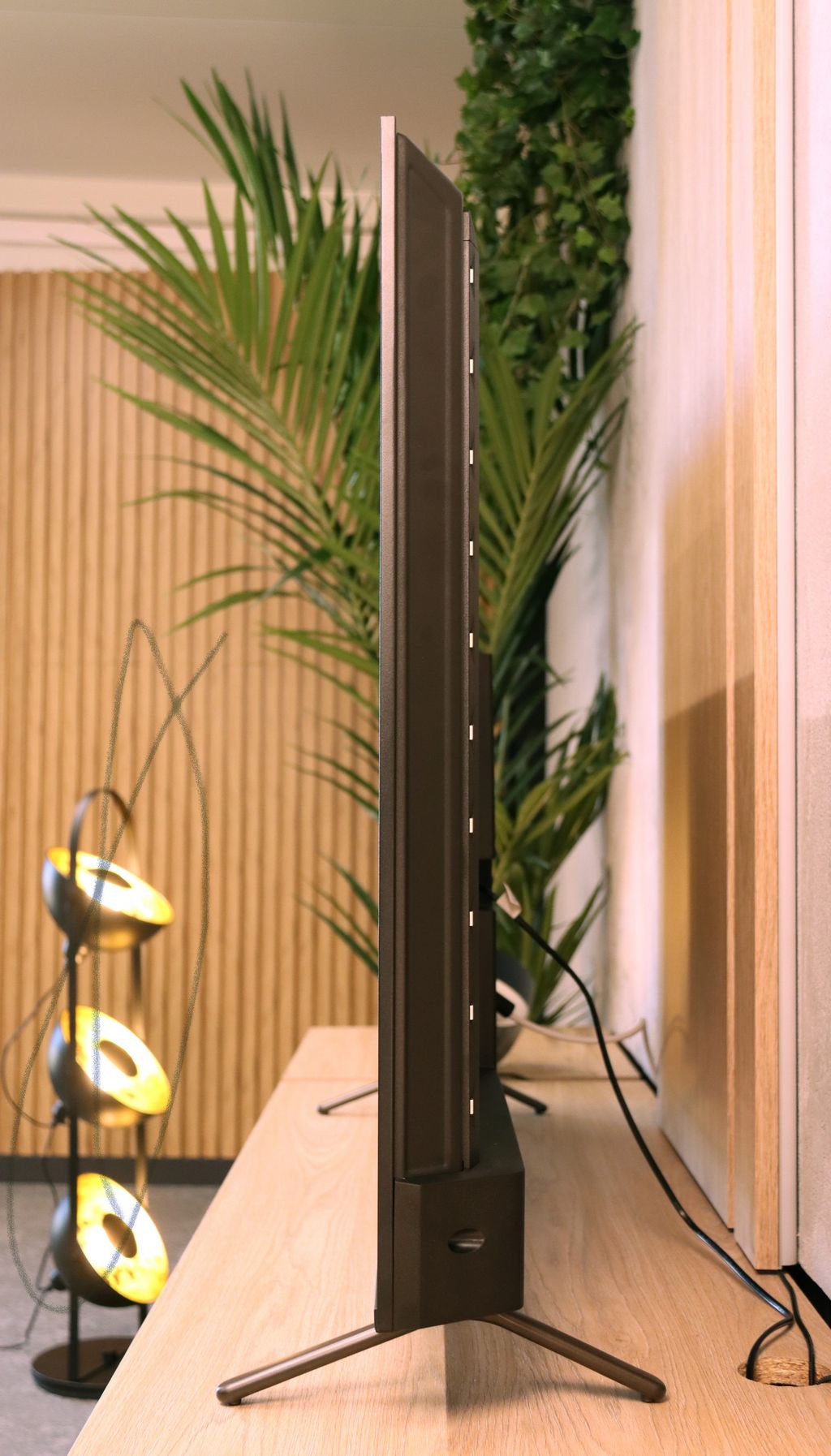
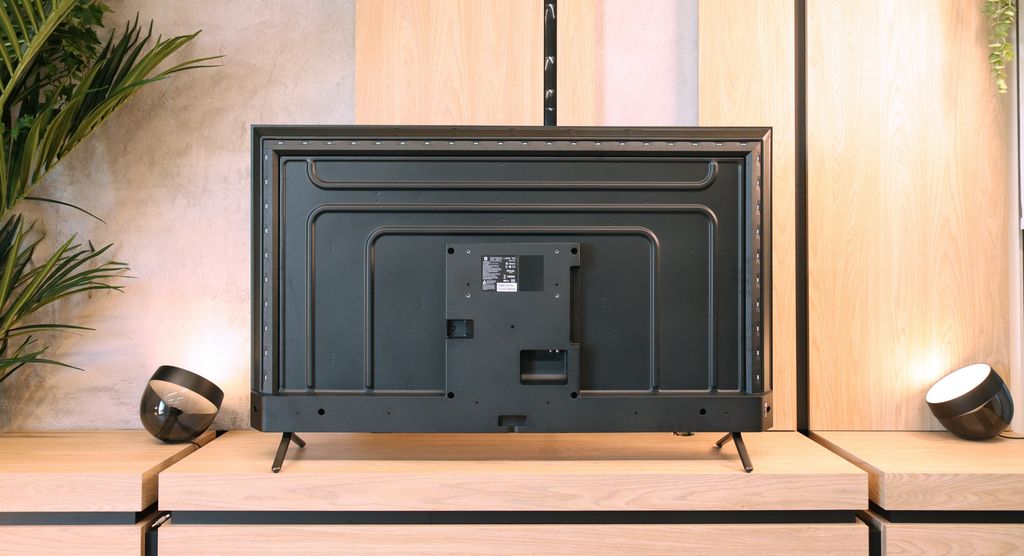
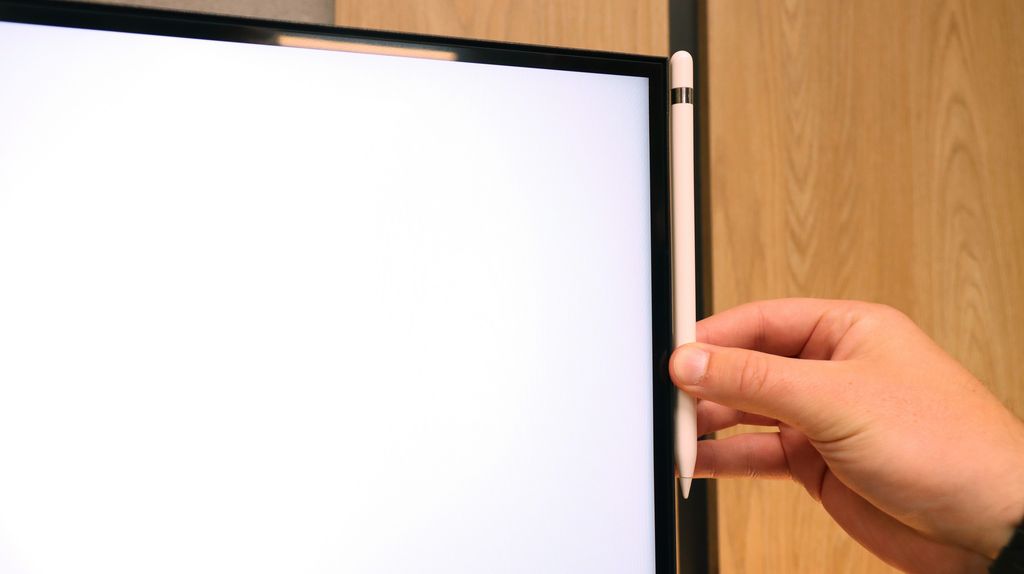
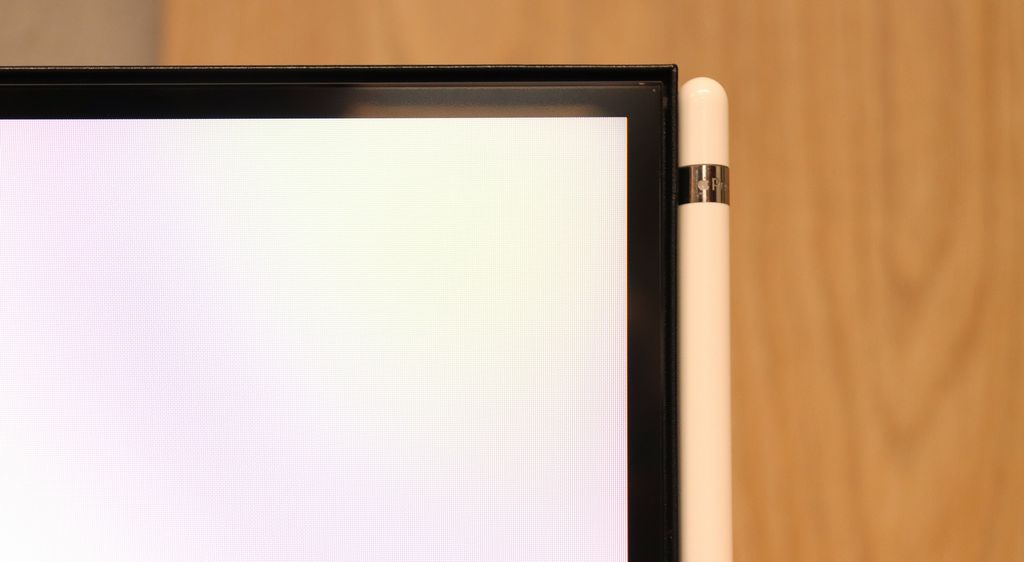

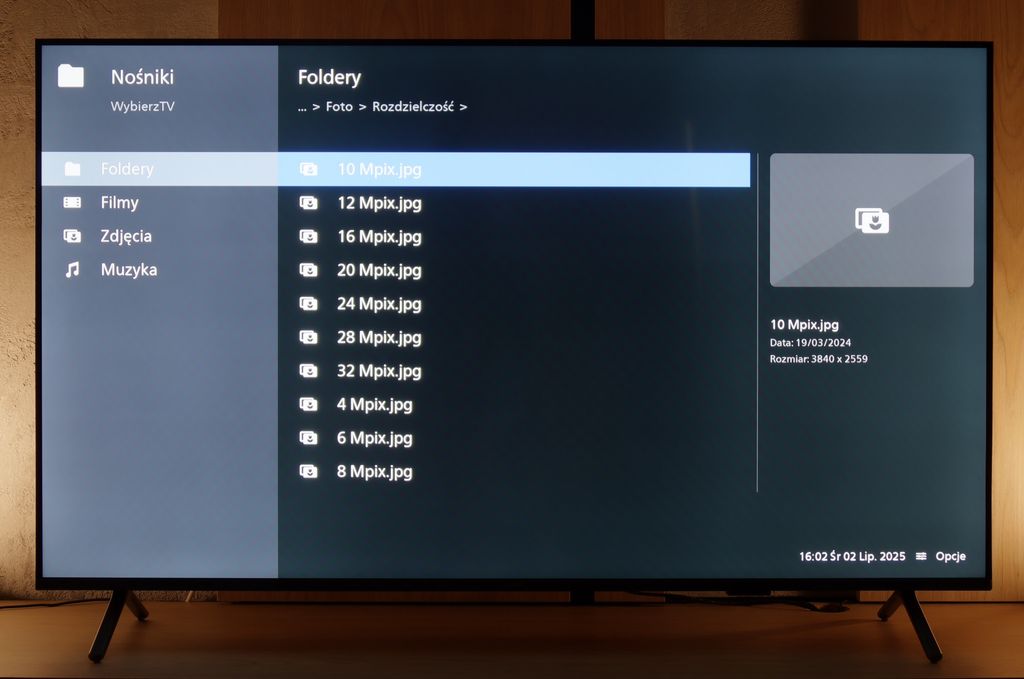
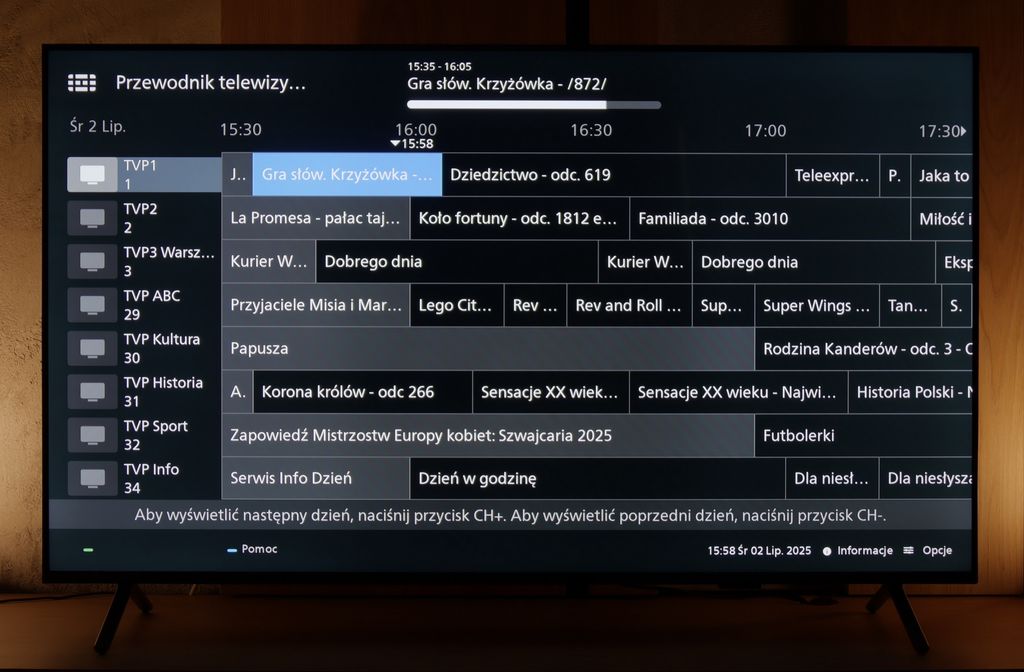
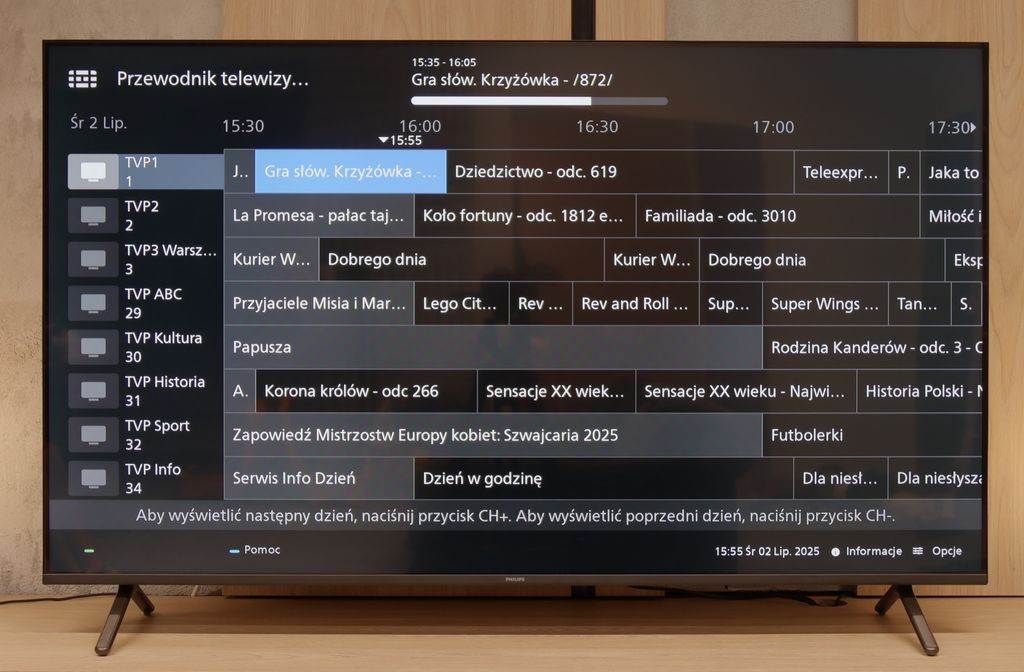
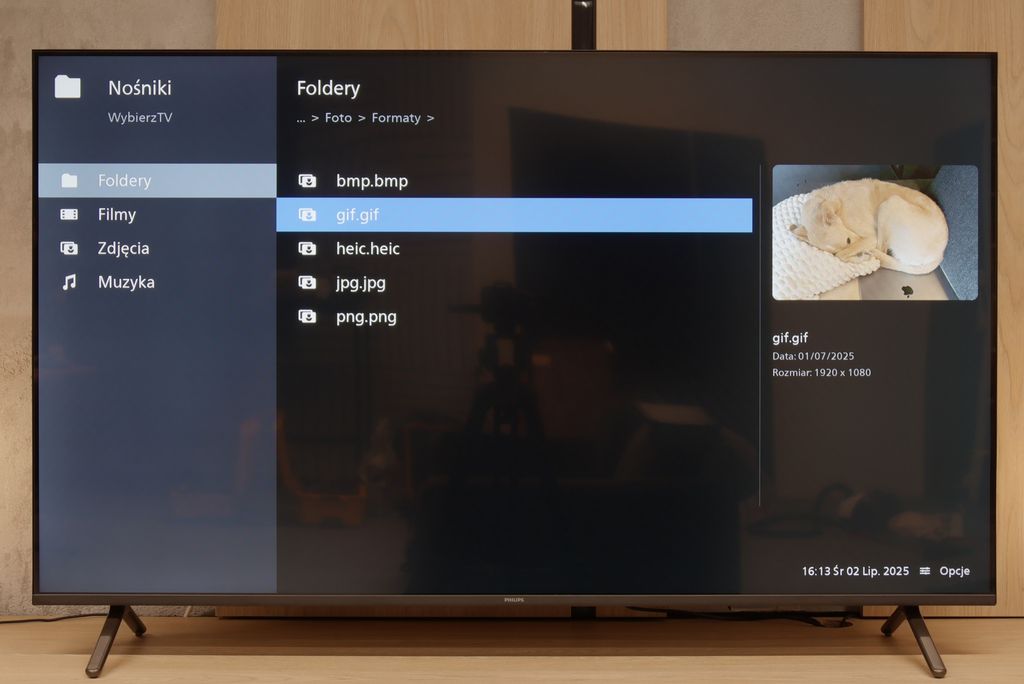
Contrast and black detail
5.9/10
6.1/10
Local dimming function: No
Local dimming function: No
Contrast:

Result
5,400:1

Result
5,700:1

Result
6,600:1

Result
6,250:1

Result
4,100:1

Result
6,000:1

Result
5,950:1

Result
6,250:1

Result
5,950:1

Result
5,750:1
Halo effect and black detail visibility:

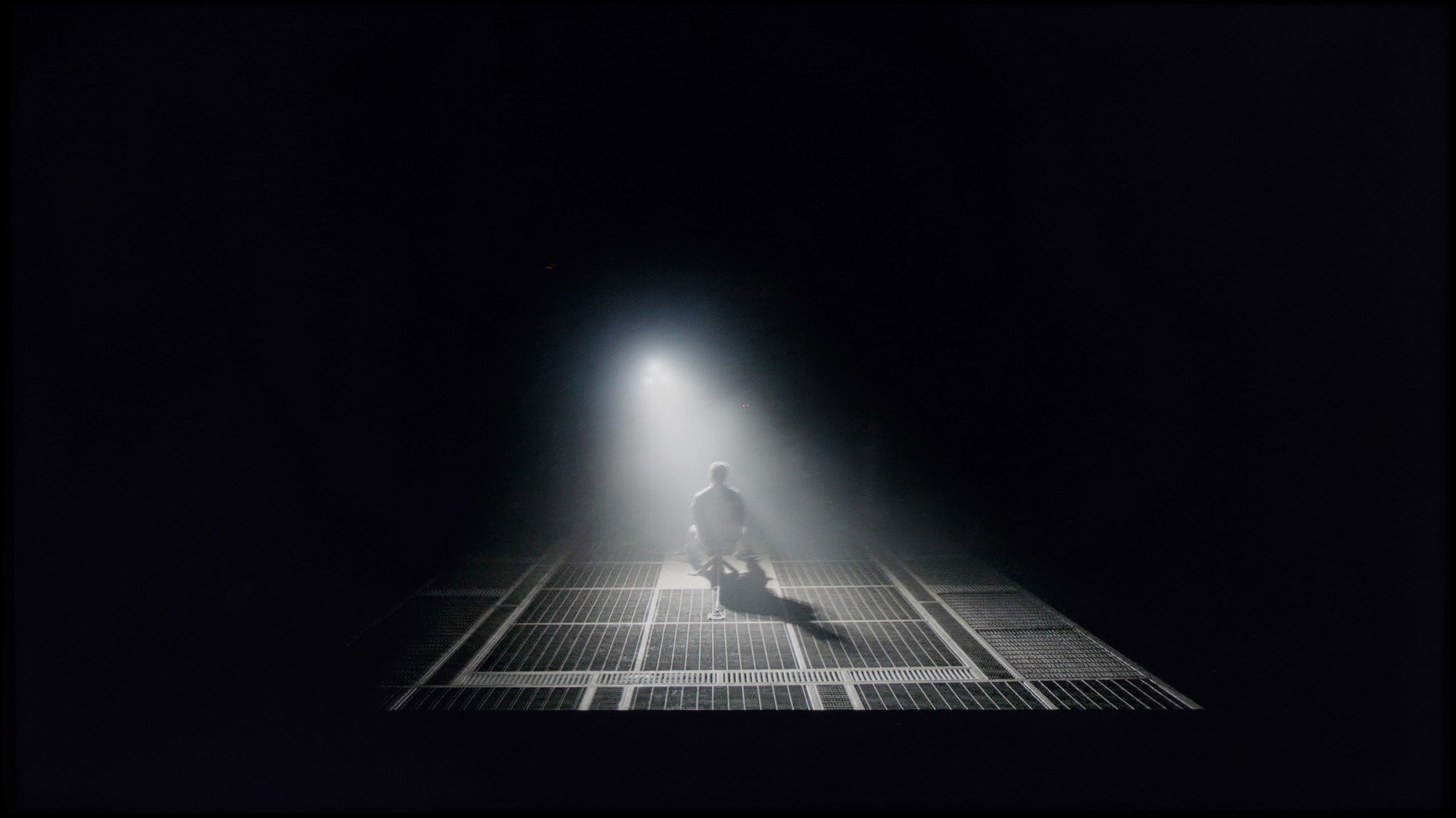
The TCL C75B television tested by us in size X" is equipped with a VA panel, which naturally provides quite decent contrast results – and this was also observed during our tests. On each test pattern, the television achieved a contrast ratio of around 5500:1. This is a result that can be considered very good in this price range. The black levels on this model perform really well, although of course, they are far from perfect.
Due to the C75B's belonging to the mid-range segment, we do not find local dimming technology here. This is particularly noticeable in more demanding scenes, such as those from the film Sicario 2, where we observed that the black takes on a navy shade instead of a deep black. This limitation of panels without local dimming can be especially visible in evening screenings with the lights off, when the dark elements of the image are more prominent. It is worth remembering this when choosing a television in this category, especially if we care about the best quality of black while watching films at night.
The Philips PUS8560 in the size we tested is equipped with a VA panel. As a result, black levels – as far as LCD televisions go – can be deemed decent. And that is exactly the case with this model. Both black levels and the overall impression of contrast in the film scenes we tested were really quite good – the image does not bleed, and details are visible even in challenging sections.
But the panel alone is not everything. Unfortunately, the PUS8500 does not come with local dimming (which is a given considering the television segment), so one must be aware that in completely dark conditions, the black can resemble shades of navy more than true black. On the other hand – and here’s a plus for Philips – the Ambilight system does an excellent job. The backlighting genuinely affects the perception of contrast. Therefore, even if technically the black is not perfect, subjectively the viewing experience becomes much more pleasurable. For many people, this is enough to make an evening screening truly impressive.
HDR effect quality
5.1/10
4.1/10
Luminance measurements in HDR:

Result
368 nit

Result
382 nit

Result
429 nit

Result
404 nit

Result
425 nit

Result
273 nit

Result
300 nit

Result
324 nit

Result
343 nit

Result
334 nit
Scene from the movie “Pan” (about 2800 nits)


Scene from the movie “Billy Lynn” (about 1100 nits)

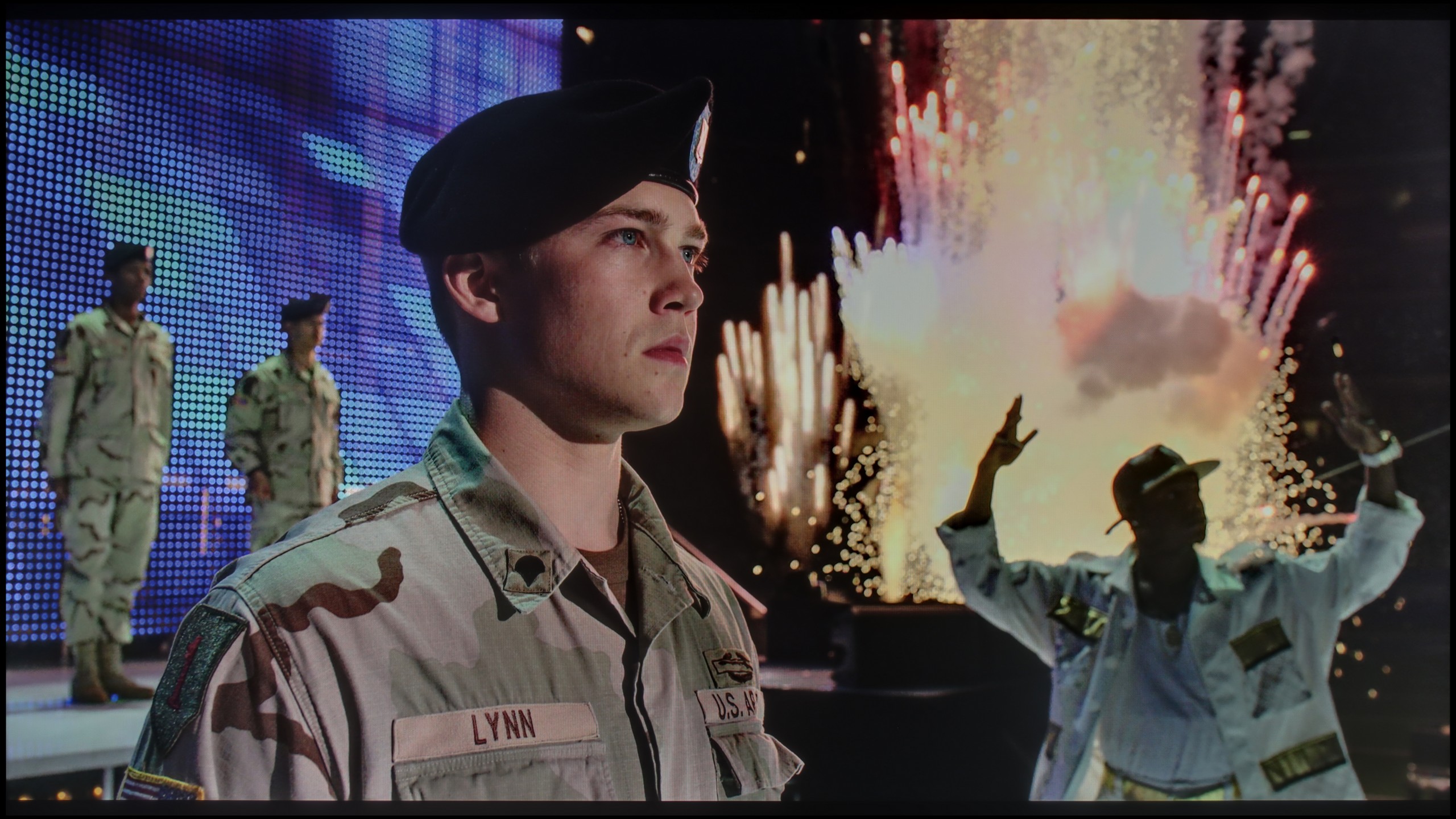
Static HDR10


Dynamic: Dolby Vision
Dynamic: HDR10+


HDR luminance chart:
Philips PUS8500
Luminancja HDR
Luminance of RGB colors
TCL C75B
Luminancja HDR
Luminance of RGB colors
During our test, the TCL C75B "spat out" around 380 nits of brightness. We recorded similar results while watching most of the films we tested. They can be considered average – the television does not perform poorly in this segment, but around 400 nits is definitely too low to fully experience the magic of HDR effects. Of course, these results are better than those of budget models, which can achieve almost half the brightness values. However, for HDR enthusiasts seeking stronger lighting effects and greater realism, the C75B may prove insufficient. On the positive side, it's worth mentioning the DCI-P3 colour gamut coverage of 95%. This is a very good result that easily suffices to enjoy a wide range of colours in content available on popular streaming platforms. Vivid and rich colours are definitely a strong point of this model.
When it comes to the HDR effect on the PUS8560, it can fairly confidently be stated that it is very average. The panel brightness is around 350 nits, which we consider to be the absolute minimum for watching content in this format. However, this is not a result that will astonish a viewer searching for the best possible picture.
On the plus side, it is worth noting that the PUS8500 series – including the PUS8560/12 we tested – is advertised as a QLED television. And indeed, we can expect a wider colour spectrum here. This model is equipped with an additional filter (PFS), and a DCI-P3 colour coverage of around 90% should suffice for the majority of users. This filter works very similarly to quantum dots. As a result, the colours are quite well saturated. It is not an outstanding result, but it is entirely sufficient for watching films and series from streaming platforms.
Factory color reproduction
7.3/10
6.2/10


Factory Mode
After calibration

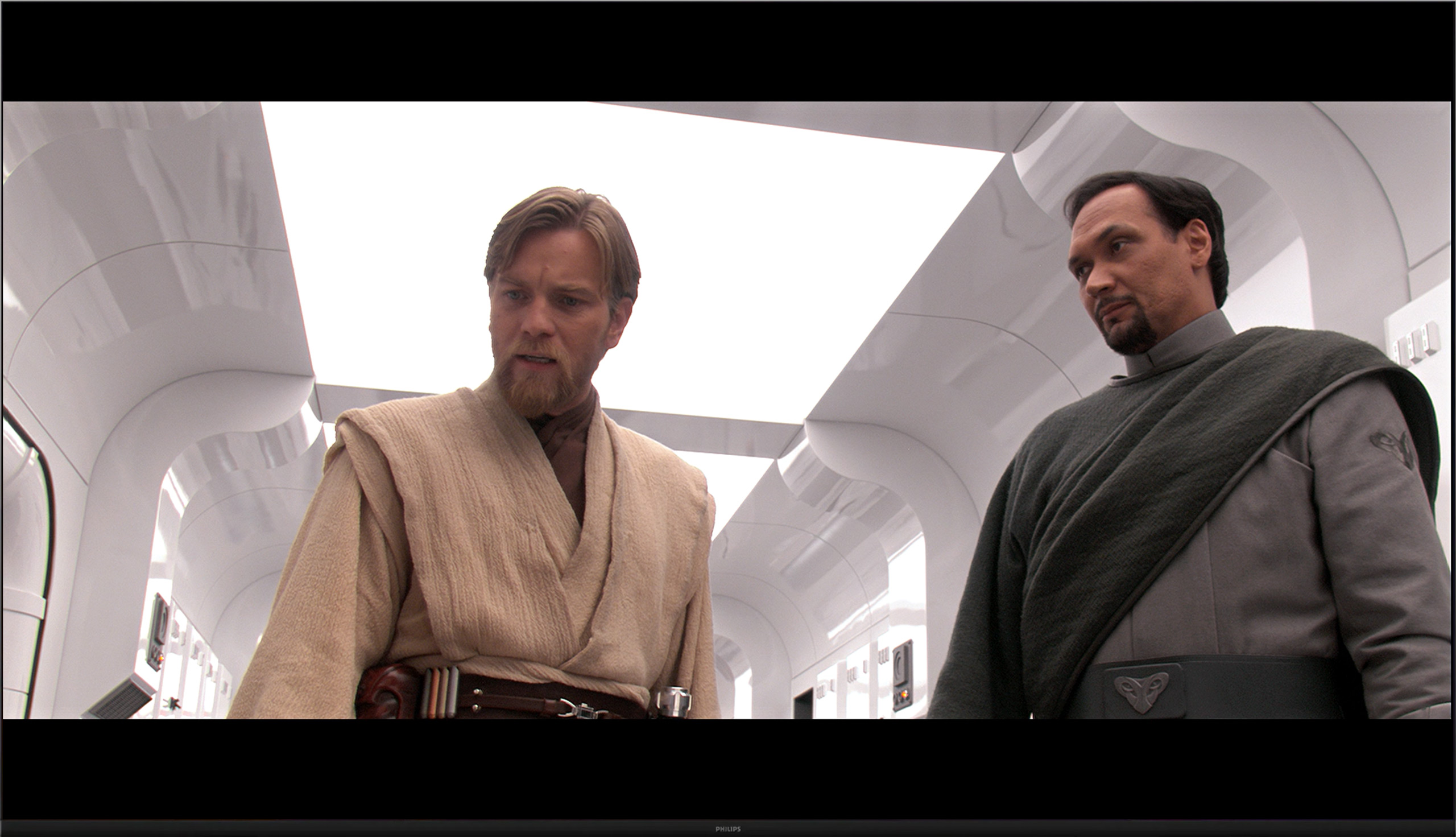
Factory Mode
After calibration
TCL C75B offers several picture modes, but in our opinion, the best choice is the “Film” mode. Although its settings are quite decent, the television struggles with some colour reproduction issues. In our tests, we noticed that the image had a noticeably pinkish tint compared to what could be considered accurate. This effect was particularly evident in skin tones, which appeared unnaturally flushed. The main culprit for this phenomenon turned out to be the white balance, characterised by an excessive amount of blue and red in both HD and 4K HDR materials.
An additional problem was the way brightness was rendered. The gamma, which is responsible for the visibility of details in darker materials, was definitely boosted, causing details in the darkest parts of the screen to be invisible, disappearing into complete blackness (e.g., the lower part of the screen in the comparison photo - around the actress's ear). Similarly, the situation was reflected in the EOTF curve, which was below the correct value, suggesting that we might encounter a similar problem in 4K HDR content.
Thanks to our experience and the right tools, we decided to take matters into our own hands and see how much we could extract from this model after professional calibration. We describe the details in the next section.
We tested the television with the best available factory settings, namely in Film/Filmmaker mode – this is the mode we recommend for everyday viewing. Unfortunately, it is not without its flaws. Both in HD and HDR content, the image had a noticeable tendency to a pink tint, caused by an excessive amount of red and blue in the white balance. Another issue turned out to be excessive brightness in the image, which was confirmed by both the gamma chart and the EOTF curve. This feature was responsible for loss of detail and washed-out colours in more challenging HDR scenes that we mentioned earlier. The overall result led to significant colour reproduction errors – in extreme cases, the delta E value exceeded 7, while the threshold for visible errors for the human eye is around 3. This situation can be improved with calibration, and you can read about its effects below.
Color reproduction after calibration
8.2/10
8.4/10

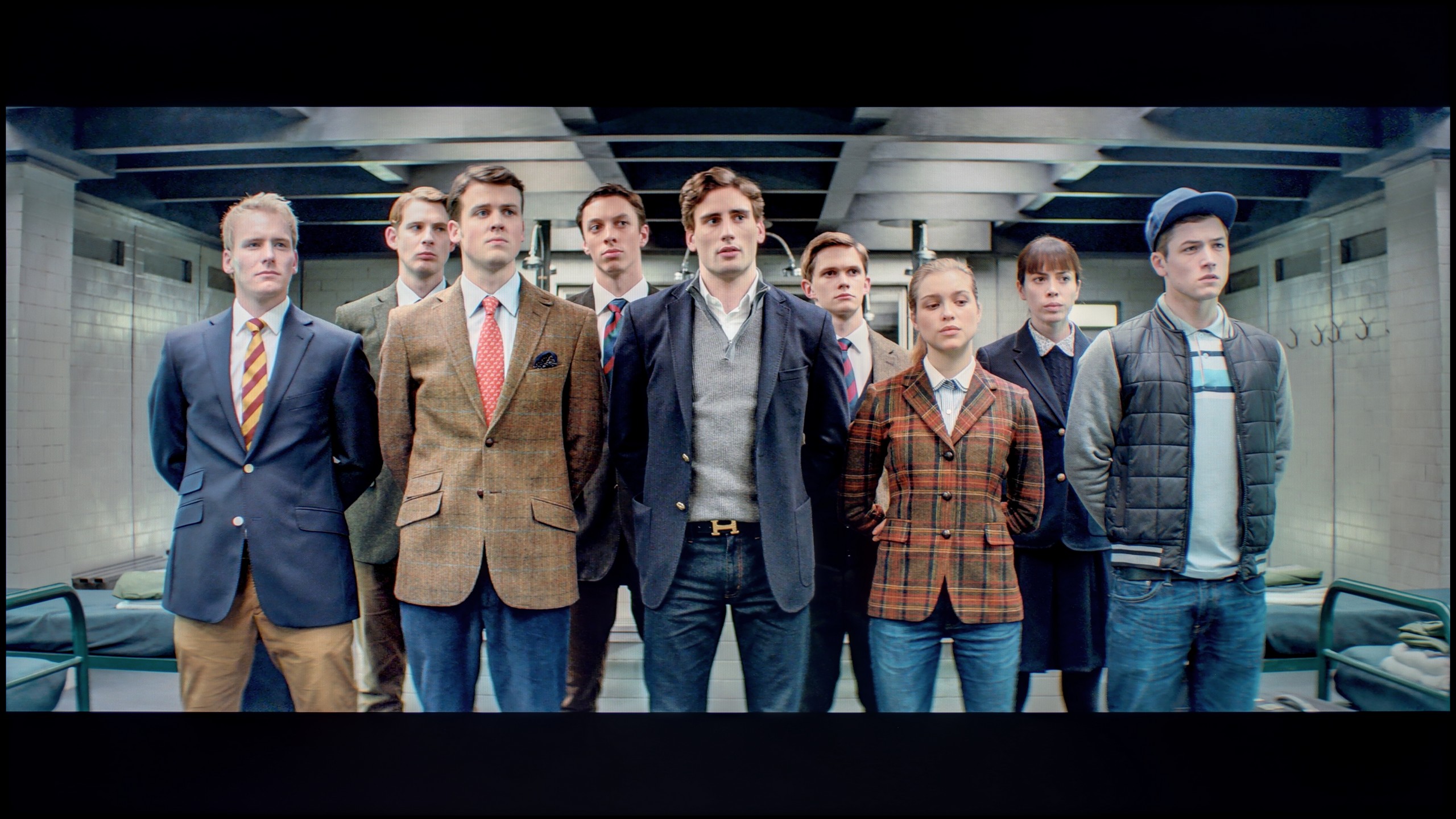


After calibrating the TCL C75B, it has clearly improved in terms of colour reproduction. Although the television does not offer many options for adjusting the white balance, we managed to enhance its settings quite significantly. As a result, the image is no longer excessively pink, and the colours now look much more natural and harmonious.
The gamma jump, which was previously an issue, has not completely disappeared, but we have managed to reduce it considerably. This has made details in dark scenes more visible – both in HD and 4K HDR materials.
Unfortunately, the lack of local dimming is still noticeable. The "blooming black" effect remains, but that is a limitation of the display itself. Nevertheless, the colours after calibration look far better, and the image is much more enjoyable to watch.
The Dutch manufacturer offers quite a sizable amount of settings in its products, so as usual, we decided to tinker with them a bit. The effects are immediately noticeable – we managed to correct the white balance, which made the image stop appearing excessively pink. The brightness characteristic has also been partially evened out, of course, within the limits set by the television itself. The image is no longer overly exaggerated, and the overall reception after calibration is definitely better than in the factory settings of the Filmmaker mode.
One could only critique the EOTF curve characteristic, which still indicates that the image has a tendency to brighten HDR materials. Despite our efforts, the darkest parts of scenes are still sometimes too bright, and the brightest ones do not always achieve their full contrast potential. However, it must be clearly stated that we are dealing with a typically budget construction – one cannot expect reference-level reproduction of HDR content from it.
Calibration has definitely helped this model – it improved the balance, toned down the aggressive colour palette, and brought the image closer to what one might expect from a well-configured movie mode. However, there are certain limitations that cannot be overcome.
Smoothness of tonal transitions
8.2/10
6.3/10

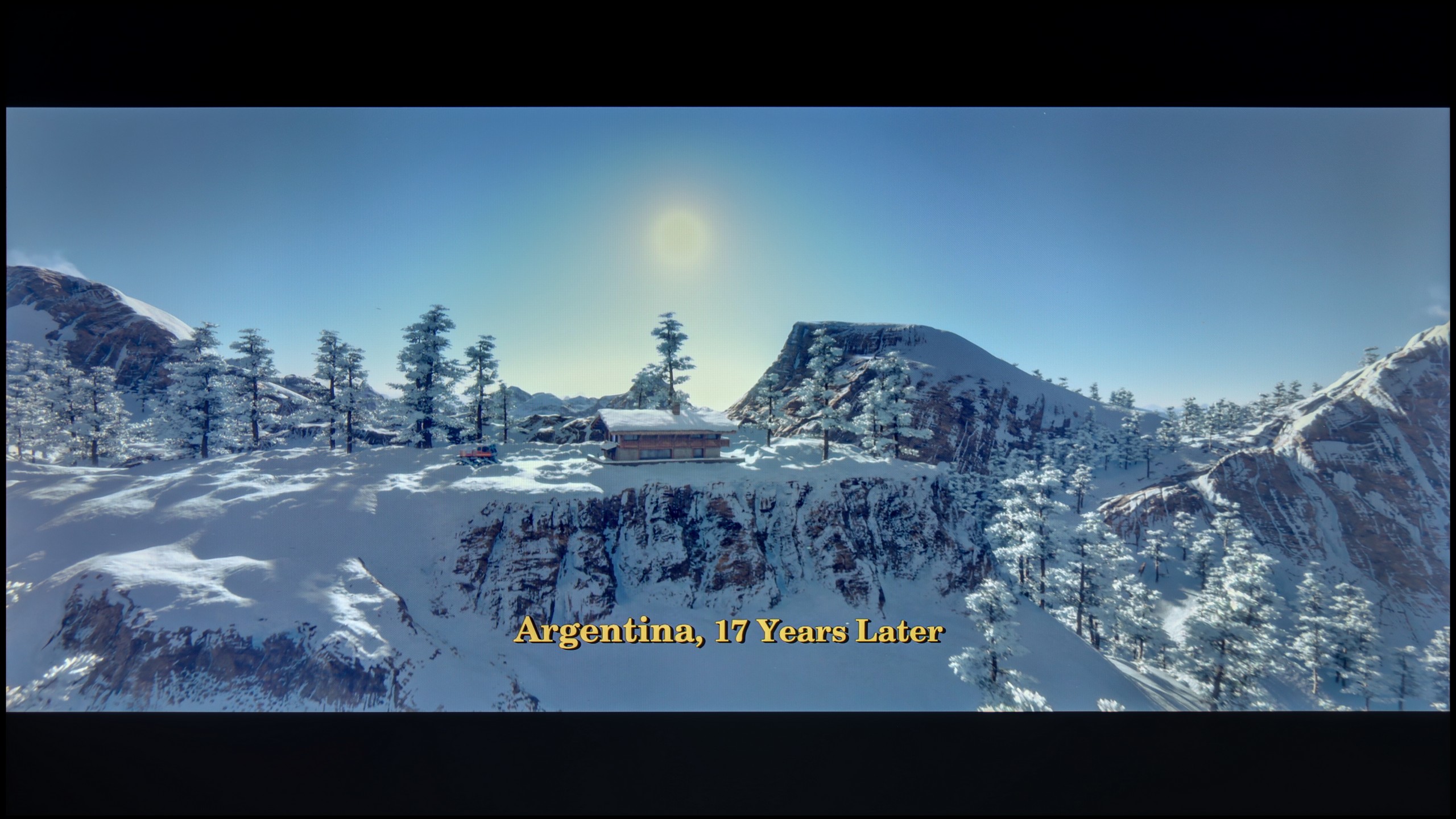

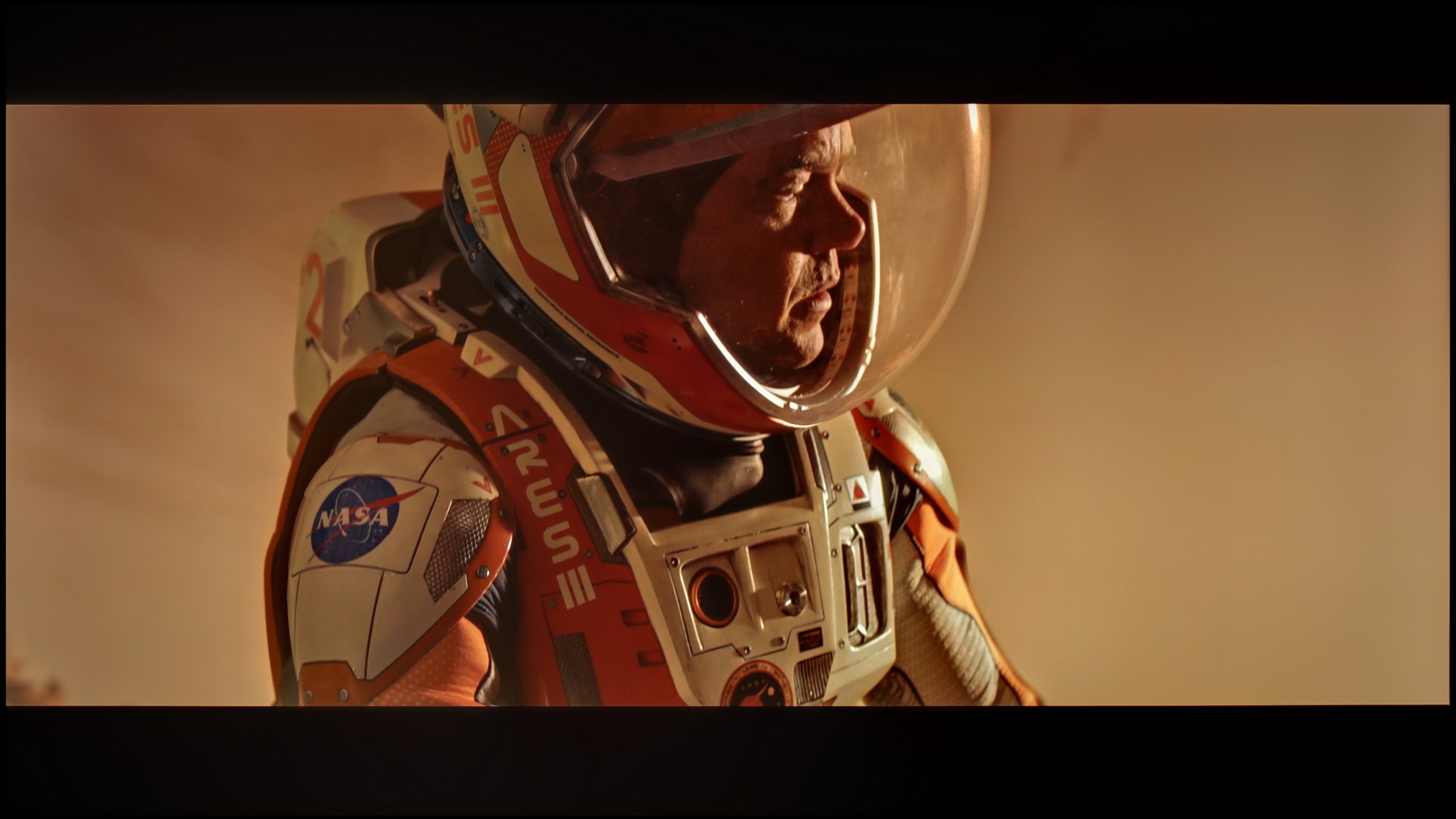

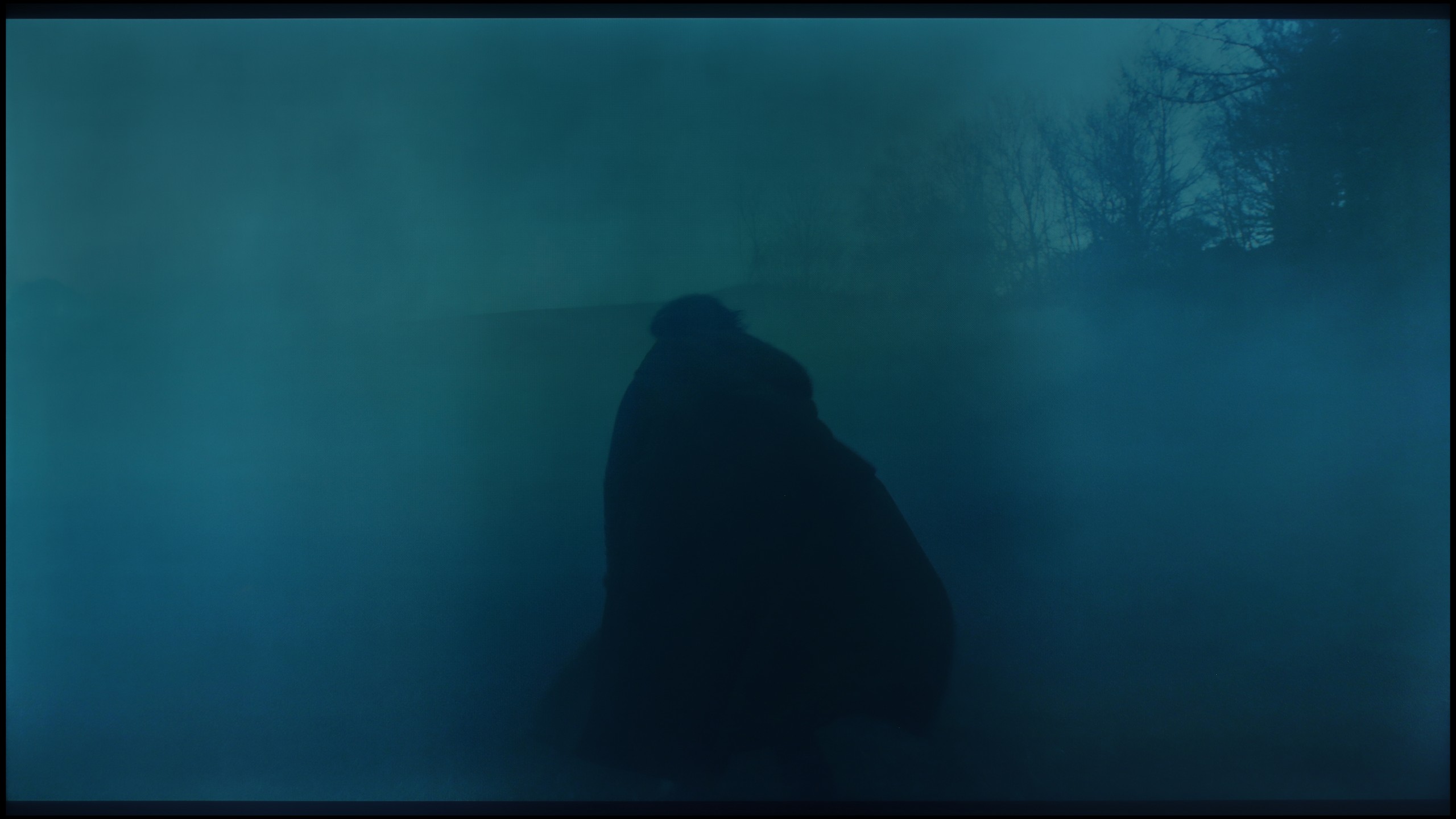

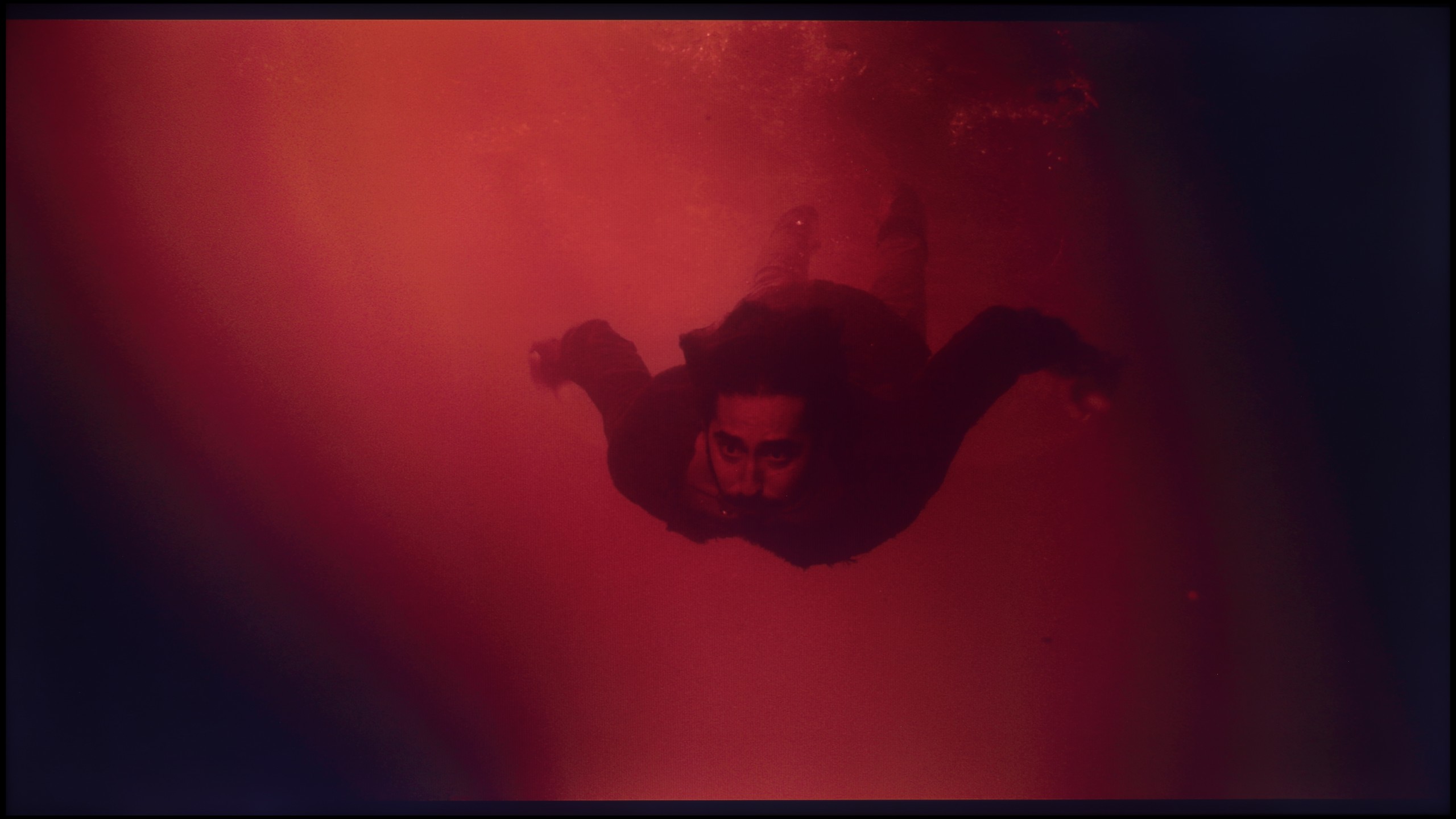




In terms of the smoothness of tonal transitions, the TCL C75B performs really well. The gradation of the darkest colours is particularly impressive – here the television does not disappoint and presents a high-quality image.
Some imperfections can be seen in the brightest areas of the screen, such as in a scene from the film Kingsman (the sun in the blue sky). Nevertheless, the final effect should satisfy the vast majority of users.
The PUS8560 handles colour transitions into smooth gradients very well. During tests, the image appeared coherent and natural, and serious issues with tonal transitions occurred only in very dark scenes – for example, in a shot with red water, where subtle cuts between colours could be noticed. However, these are rather exceptions that do not spoil the reception of most content. It is worth mentioning another phenomenon that more significantly affects the quality of the image – the so-called dithering, which refers to a slight "tingling" visible on uniform backgrounds. This effect can be particularly noticeable in high-quality materials and can somewhat spoil the impression of image clarity. It is for this flaw that we deducted some points in our evaluation.
Image scaling and smoothness of tonal transitions
5/10
6.1/10
Smooth transition function

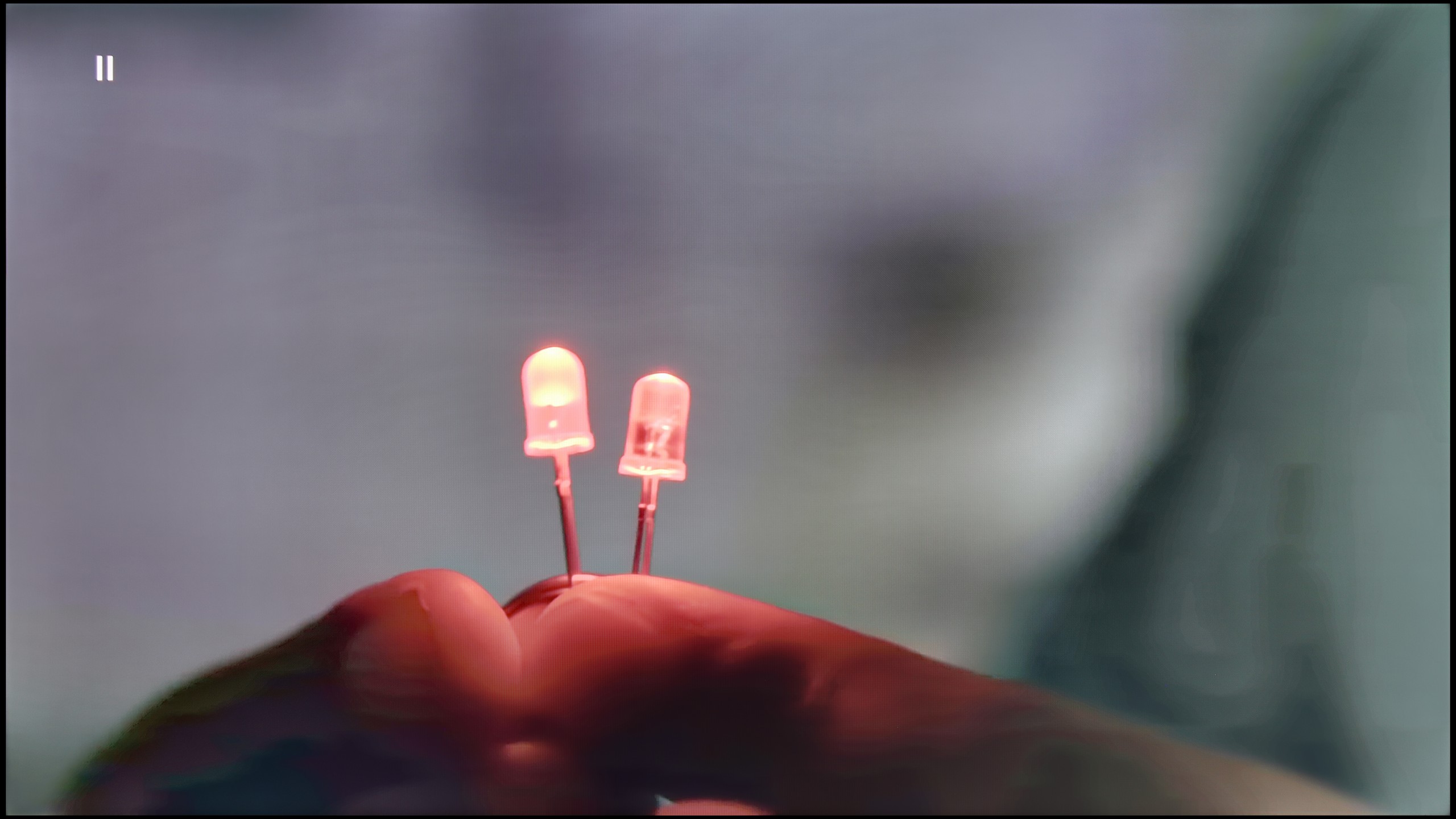
Image without overscan on the SD signal


TCL C75B has a tone transition smoothing function, but unfortunately, we cannot commend it. Regardless of the selected level – low or high – tone transitions in older materials remained visible, as if the function wasn't working at all. It's hard to say anything positive about it, as in practice it seems completely useless.
The image scaling is better. The television performs quite decently, although on thinner elements, like branches in the background, you can notice slight jaggedness. However, this is not something that significantly interferes with daily viewing.
Unfortunately, a bigger problem turned out to be overscan, which is cutting off the edges of the image. In our tests, there were instances where news tickers or other elements near the edge of the screen were cut off. This is definitely something to pay attention to, especially if we use the television for watching news programmes or content with text on the screen.
Philips PUS8560 offers a function for reducing posterization, hidden under the name "distortion reduction". And although it indeed fulfills its role by smoothing out problematic tonal transitions, it works a bit too broadly. In practice, it affects not only colourful gradients but also softens faces, the textures of clothing, and the surfaces of furniture. This compromises the authenticity of the image – especially in films where natural texture is very important. However, if someone is looking for smoothing at all costs, it's best to set this option to "Low". For cinema image enthusiasts – we definitely do not recommend it.
On the positive side, the quality of upscaling older materials is noteworthy – the PUS8560 model handles them surprisingly well. The image retains its natural softness, without artificially boosted sharpness. It is also worth mentioning that the television correctly displays content with very low resolution, avoiding issues with image edge cutting (so-called overscan).
Blur and motion smoothness
7.3/10
4/10

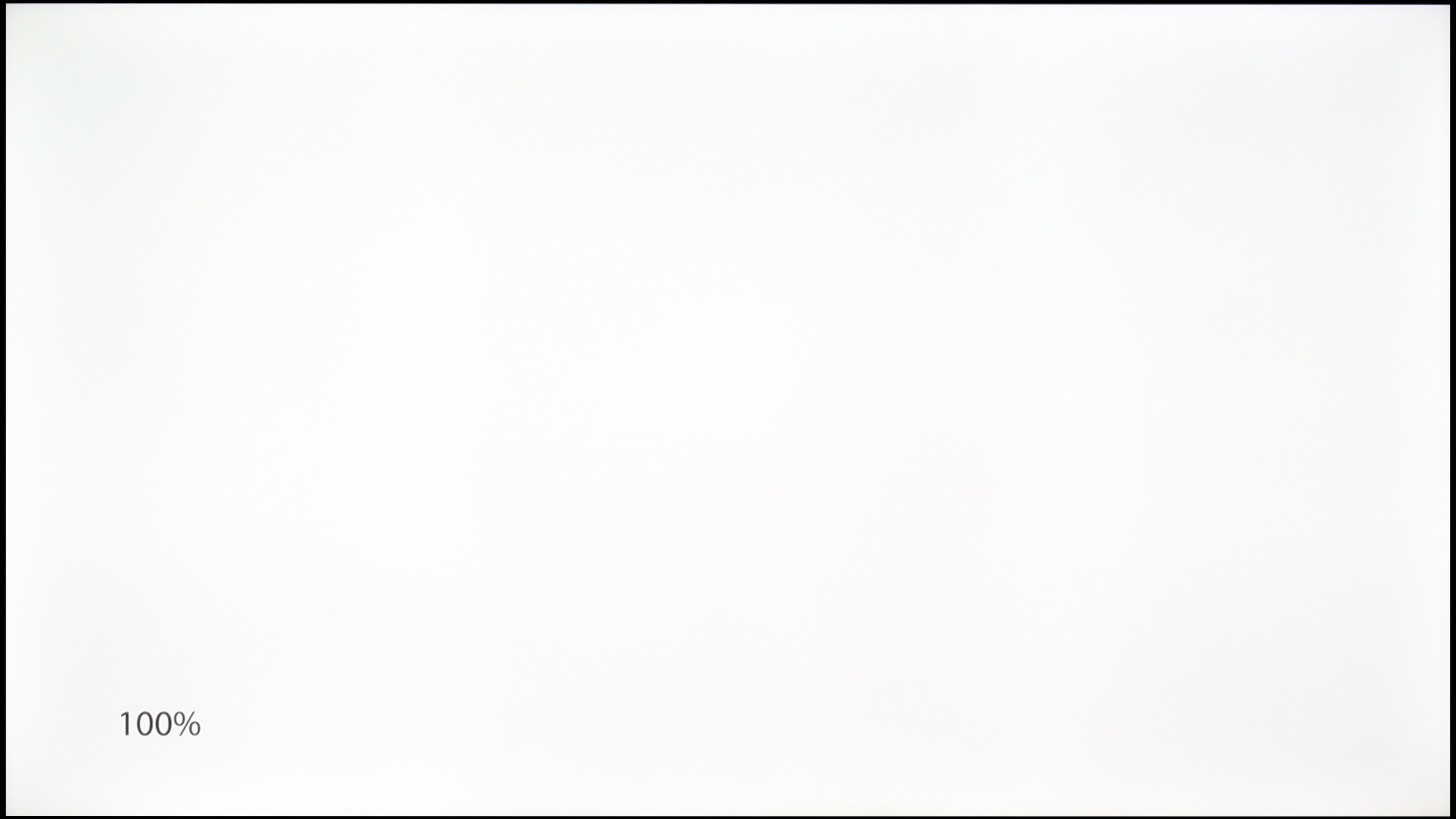
Blur (native resolution, maximum refresh rate):




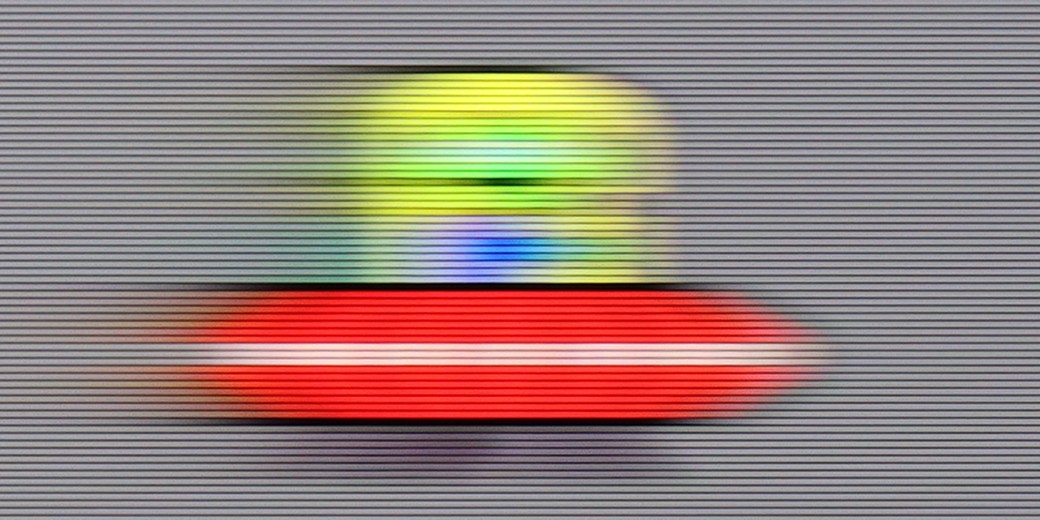
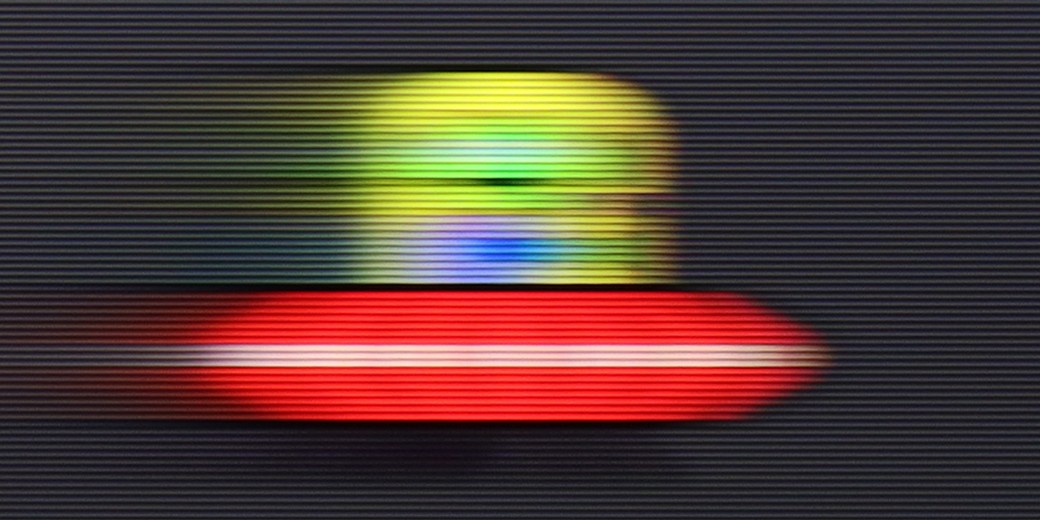
The TCL C75B definitely has something to offer gamers. The television is equipped with a panel that can display images with a refresh rate of 144 Hz in 4K, and even 240 Hz in Full HD. These are really impressive results, especially for a model from the entry-level range.
In addition, there are features for improving fluidity and reducing motion blur in films. The "Motion" option allows precise adjustment of the effect on a 10-point scale, which offers great personalisation possibilities - everyone can set the fluidity as they like.
The Philips PUS8560 is a television equipped with a panel featuring a refresh rate of 60 Hz, which immediately limits its capabilities in terms of displaying dynamic content. Watching sports or playing on a console is not particularly enjoyable. The situation is further worsened by the lack of any option to improve the smoothness of films. In the menu, we won't find settings that would allow us to enable a motion smoother or even a slight motion smoothing for films recorded at 24 frames per second. You can imagine the effect. The image can appear jerky, especially in shots with panoramic camera movements.
Console compatibility and gaming features
9.8/10
4.7/10
- ALLM
- VRR
- VRR range48 - 240Hz48 - 60Hz
- Dolby Vision Game Mode
- Correct implementation of HGIG
- 1080p@120Hz
- 1440p@120Hz
- 4K@120Hz
- Game bar

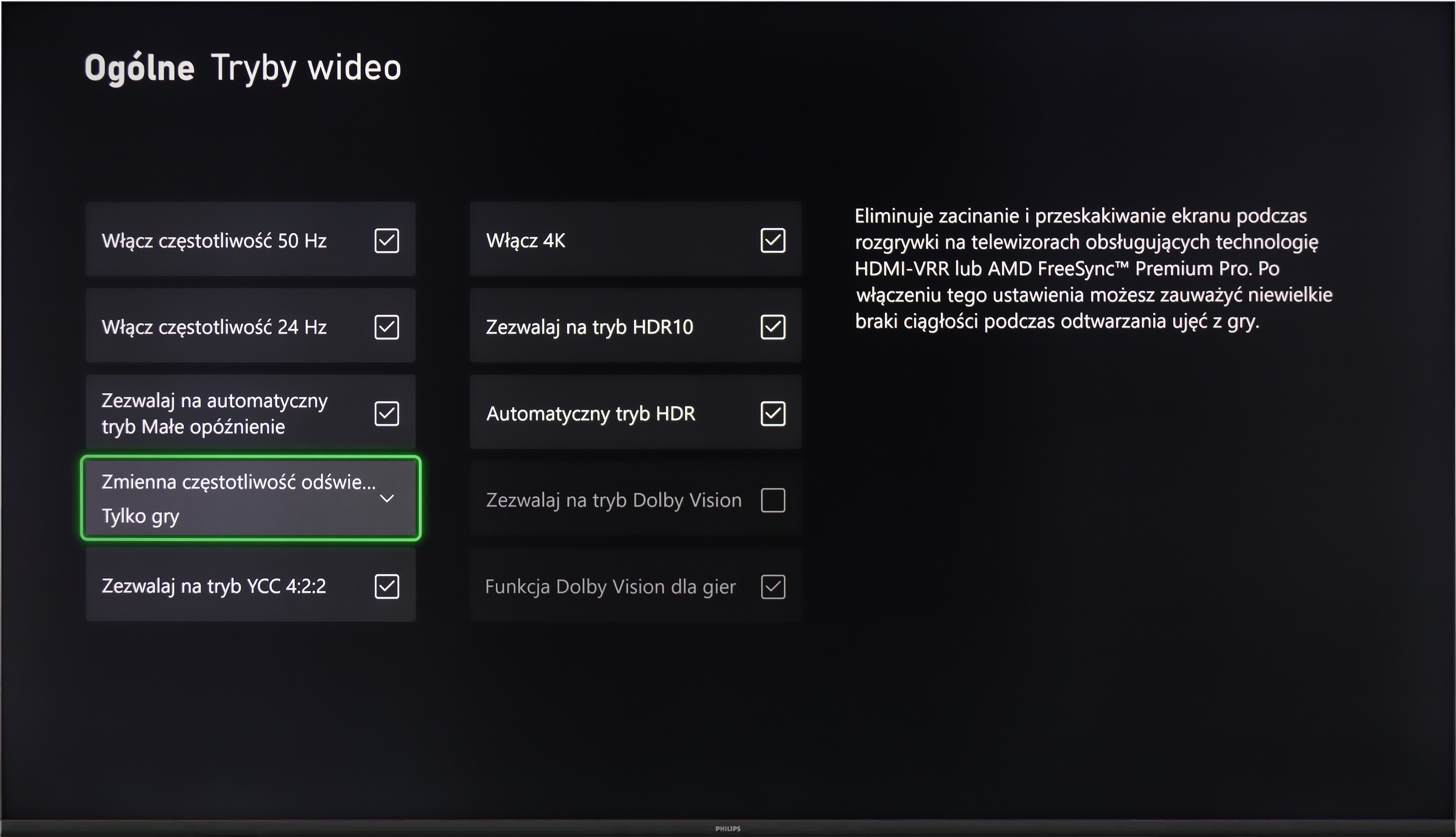

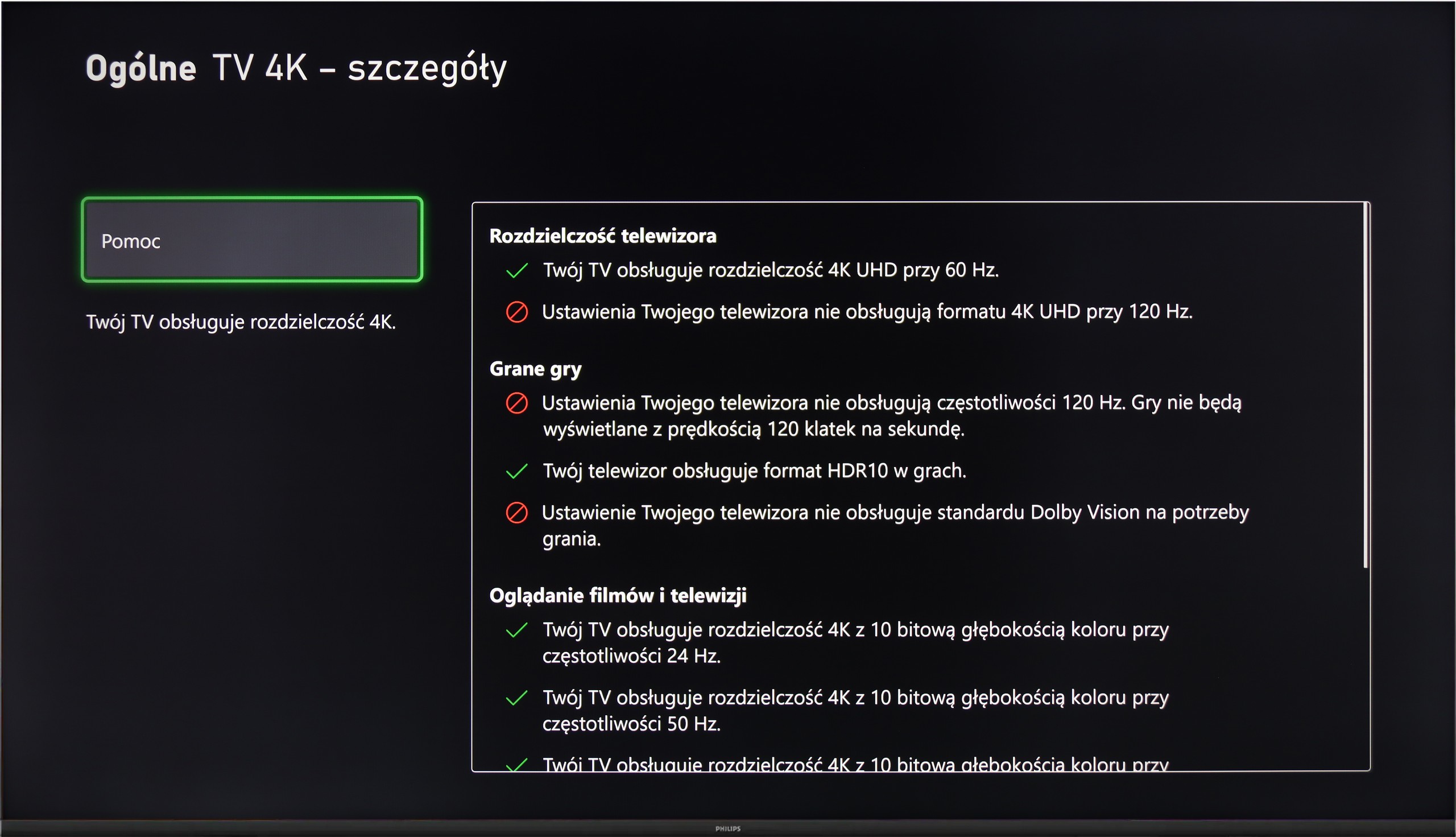

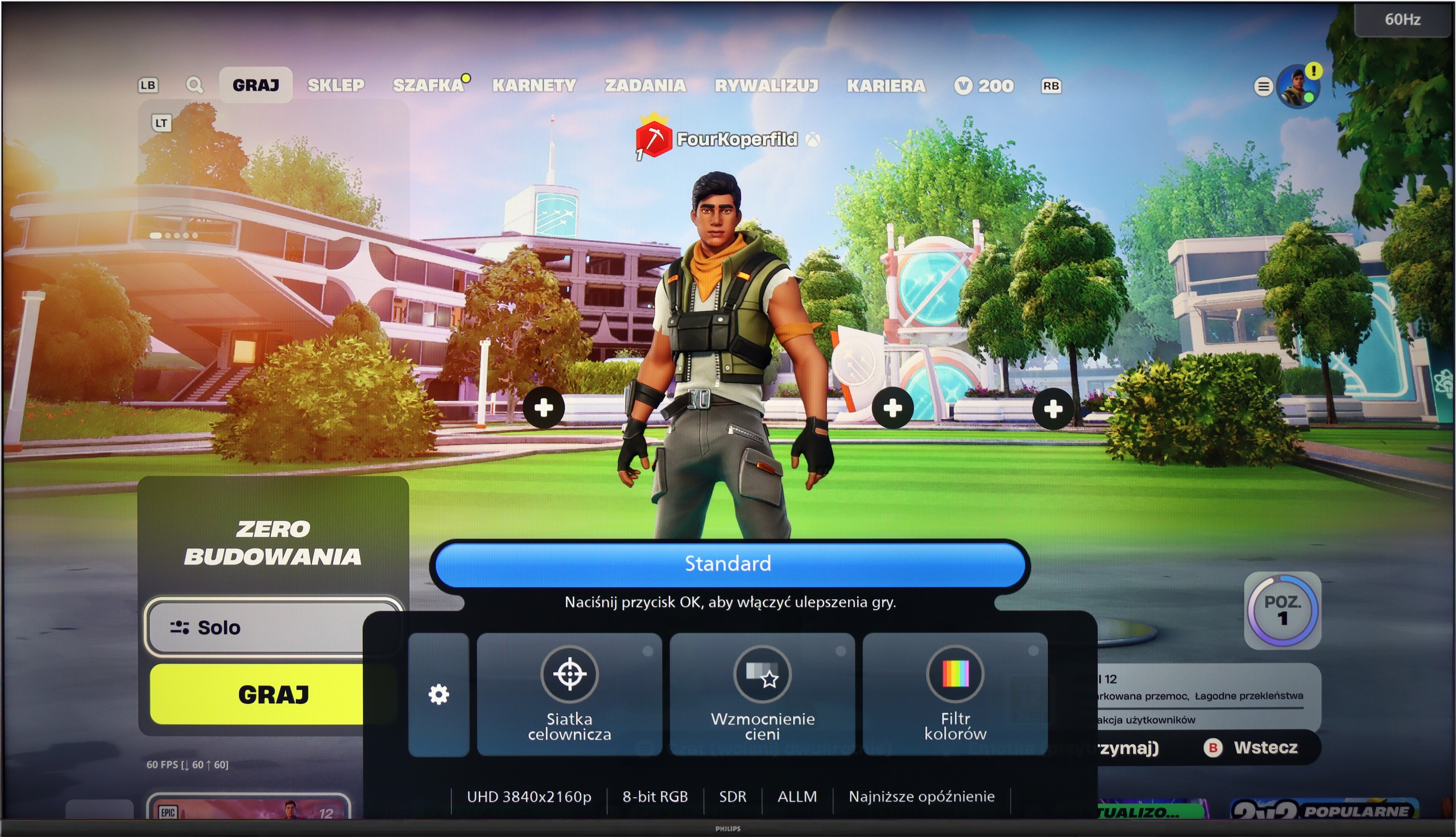

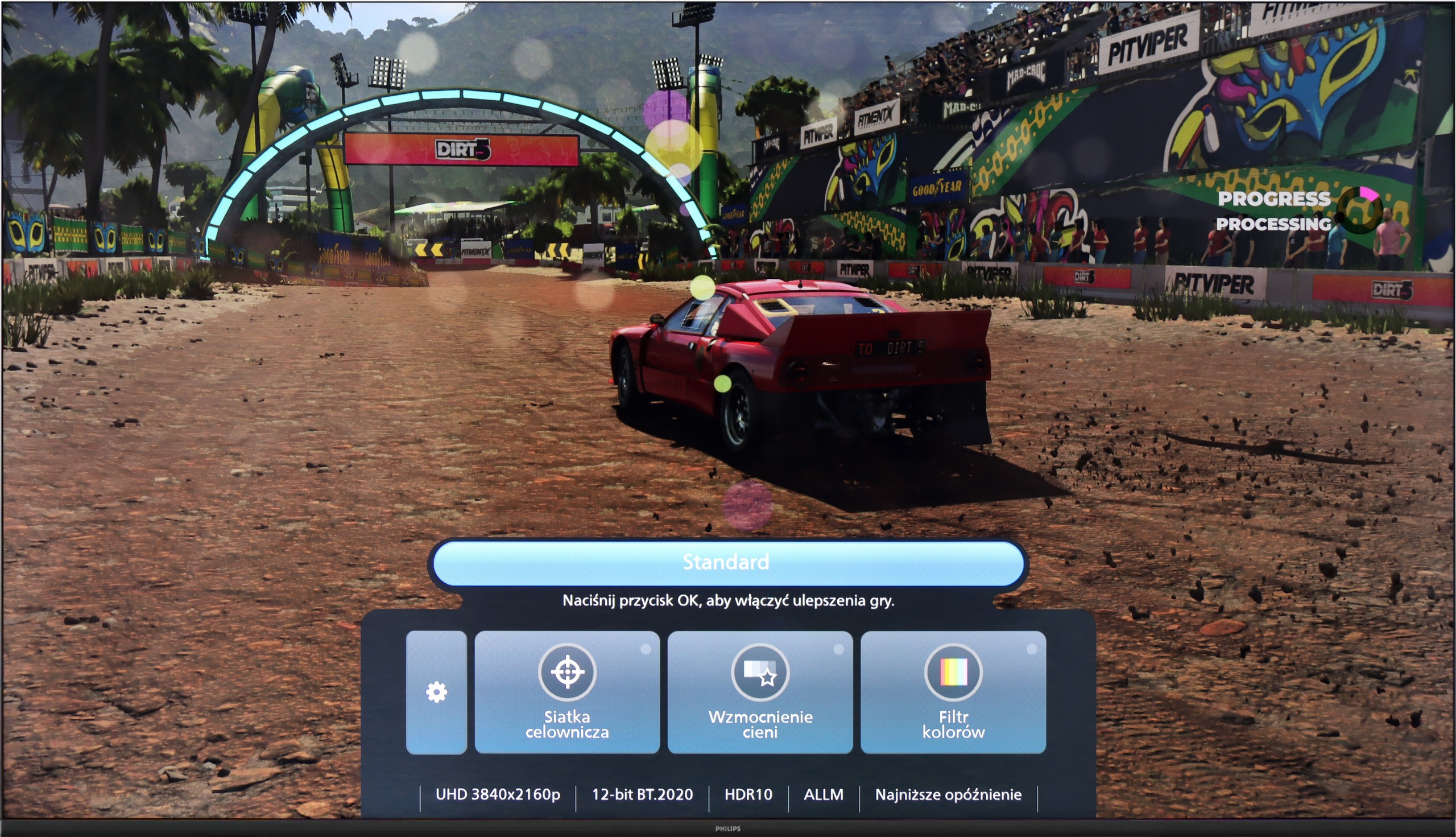
The TCL C75B is undoubtedly a television designed with gamers in mind. It offers nearly everything that even the most demanding console users could need. With the implementation of fully capable HDMI 2.1, the television supports features like ALLM (Automatic Low Latency Mode) and VRR (Variable Refresh Rate) – operating within the full potential of the television, up to 240 Hz in Full HD resolution.
Additionally, the television supports advanced HDR technologies, including Dolby Vision and HGiG, allowing for even better detail reproduction in HDR-optimised games. The C75B is also equipped with a very convenient interface for gamers in the form of Game Bar, where all key parameters such as refresh rate, input lag, and image settings can be checked – all within a single click.
In a nutshell: the C75B is a great choice for gamers, offering a wide range of features that allow users to fully enjoy the capabilities of modern consoles and games.
Although the Philips PUS8560 is not designed with gamers in mind, the manufacturer has decided to equip it with a few features that may prove useful when connecting a console. On board, we find automatic switching to game mode (ALLM), as well as a simple connection status information bar – the so-called Game Bar. It does not make a particularly strong visual impression, but it serves its purpose. The presence of variable refresh rate (VRR), operating in the range of 48 to 60 Hz, may come as a surprise. While this is not a wide range, in the case of less demanding games or titles with unstable frame rates, VRR can help reduce screen tearing. However, this is the only element that could be considered beyond the minimum.
It must be made clear that the PUS8560 is not equipment for gamers looking for a responsive screen and full support for modern console features. It lacks HDMI 2.1 ports, the refresh rate is limited to 60 Hz, and the response time of the panel is not among the fastest. This model may be suitable at most for casual gamers who want to enjoy the Ambilight system.
Input lag
9.8/10
10/10
SDR
HDR
Dolby Vision
Input lag in the TCL C75B is something that really impresses. At a refresh rate of 144 Hz, the lag is only 9 ms, which makes the TV's response to our actions on the pad or keyboard practically instantaneous. For 60 Hz, the result is 19 ms – while not record-breakingly low, it still falls within the range where delays are practically unnoticeable during gaming. One could say that the difference would not be felt anyway, which makes this TV a good choice even for more demanding gamers.
The input lag on the PUS8560 is very good. When we previously mentioned that this screen is rather for the "casual gamer," there is nothing to be ashamed of in this regard – even when compared to screens aimed at gamers. Results around 12 ms are truly outstanding, allowing for an enjoyable responsive gameplay experience. It doesn't matter whether we are playing in Full HD or 4K – the lag remains equally low, so if you value a quick response time, the PUS8560 will definitely not disappoint in this aspect.
Compatibility with PC
7.6/10
5.6/10

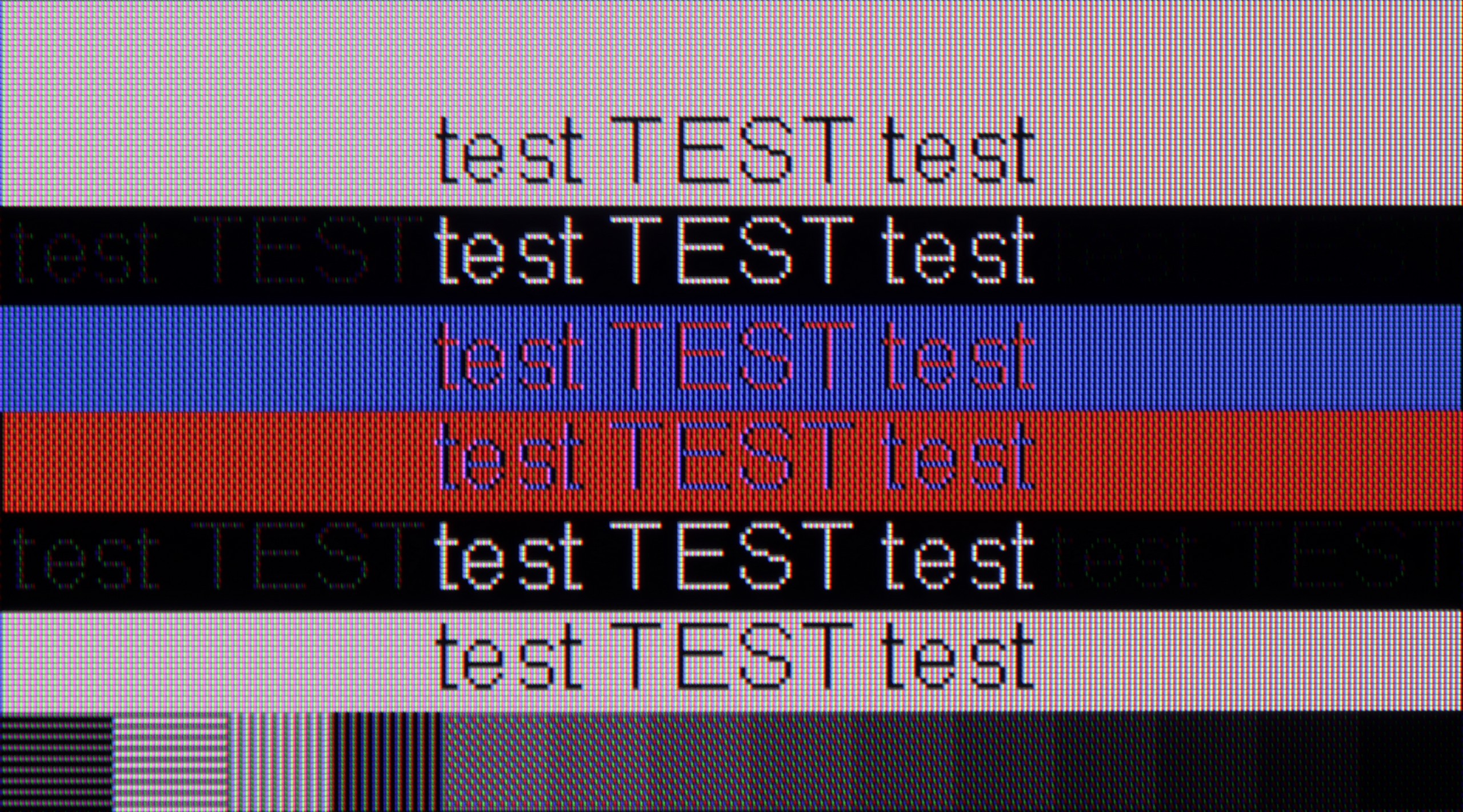
TCL C75B is quite a good choice for connecting to a computer. With high refresh rates, low input lag, and support for G-Sync, the television performs excellently in games – both dynamic ones and more demanding titles. The image is smooth, and the response to our actions is quick, which gamers will surely appreciate.
For office work, the television also does well. Text is readable, although on a dark background some imperfections can be noticed – certain fonts look as if there are missing pieces of vertical lines. This may be distracting if we work a lot with documents or text editing. However, if the computer is mainly used for gaming or watching films, the TCL C75B will easily fulfill its role as a monitor. It is a versatile piece of equipment that can handle most applications.
When it comes to working with a PC on the PUS8560, it looks... quite strange. Chroma 4:4:4 is present in "Monitor" mode, but there is a problem with grey fonts – not all subpixels are lit, which results in the text appearing jagged. On the other hand, in "Game" mode – chroma 4:4:4 disappears, but the grey fonts look correct. In practice, we are therefore forced to juggle settings if we want to have perfectly readable text at all times. And what about gaming on the computer? Our opinion remains the same as for consoles – it is doable, but without fireworks. There is no variable refresh rate for G-SYNC graphics cards, and the refresh rate itself remains relatively low. However, we can once again highlight the very low input lag, which saves the situation in dynamic games.
Viewing angles
2.7/10
3.3/10
The viewing angles on the TCL C75B are, unfortunately, very poor. This is a typical compromise with VA panels – better blacks at the cost of side viewing visibility. The image quickly loses quality when viewed from an angle, which is the complete opposite of what IPS panel televisions offer. If we plan to watch the television mainly straight on, this won't be a major issue. However, with a larger number of viewers sitting at different angles, the image quality may disappoint.
The viewing angles on the PUS8560 are precisely what one would expect from a VA panel - it's not the best. The image loses quality even with a slight shift off-axis – colours become washed out and black begins to resemble a dark navy. This is, of course, the price paid for the better contrast that VA offers when viewed directly. In the case of our 55-inch model, this is still acceptable, especially if the television is positioned perfectly opposite the sofa. However, with larger screen sizes or a less central placement in the living room – it could become a problem for comfortable viewing.
TV efficiency during daytime
4.9/10
4.9/10

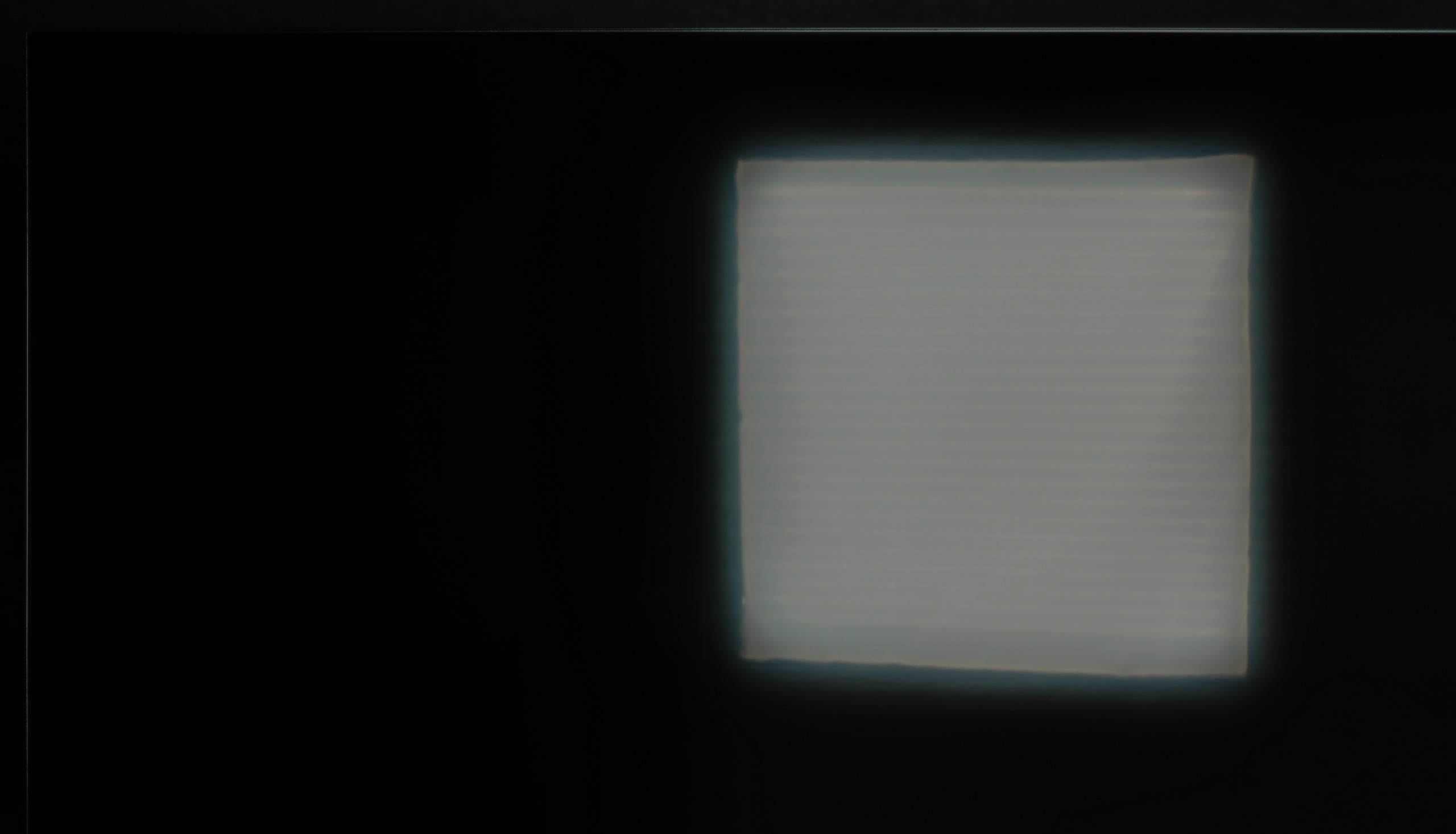

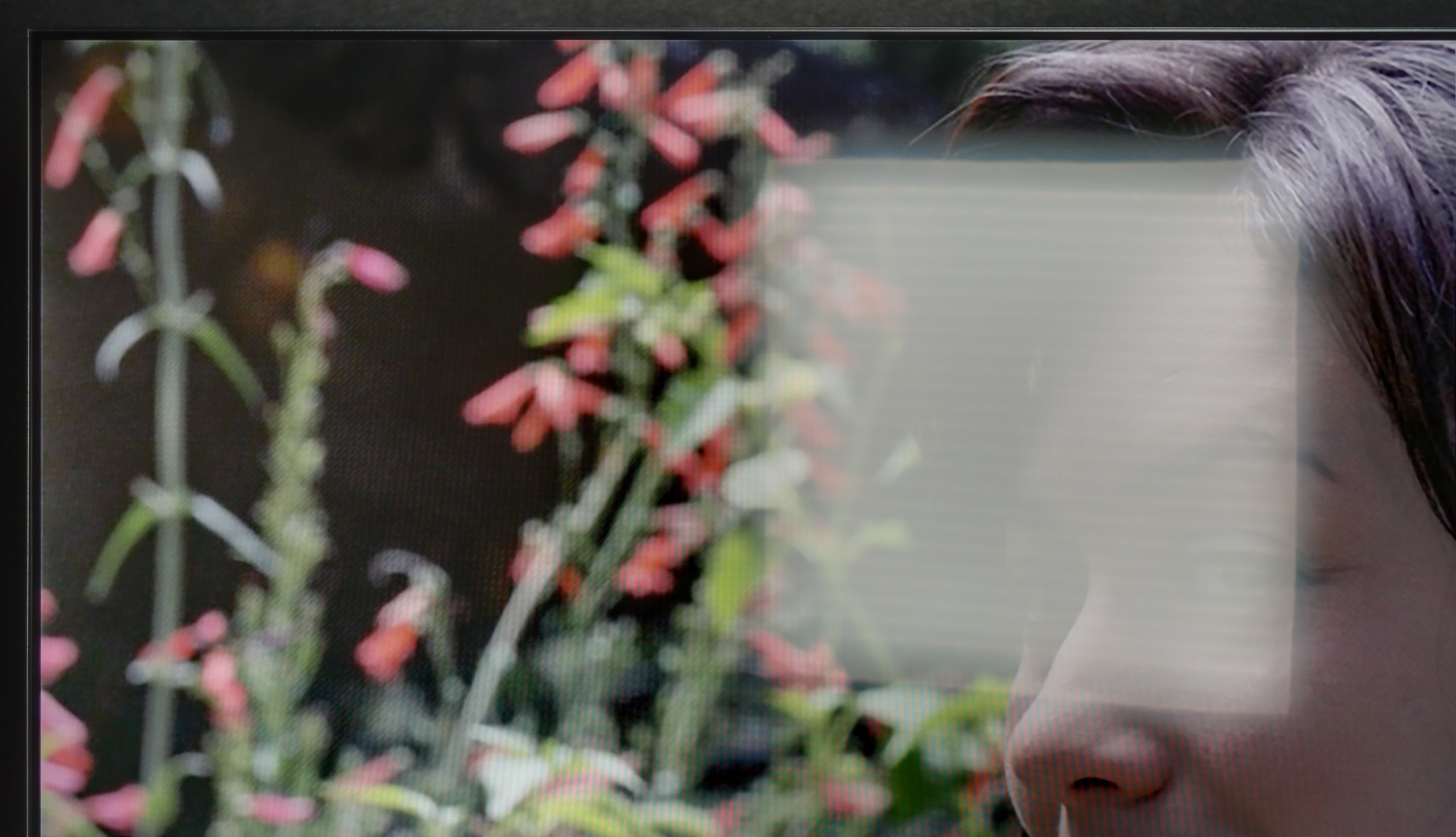
Matrix brightness
Average luminance SDR
Philips PUS8500 : 331 cd/m2
TCL C75B: 366 cd/m2
The TCL C75B performs moderately during the day. The satin screen somewhat limits reflections, but it's not an ideal solution. The brightness is also an issue – 350 cd/m² is simply too low for comfortable viewing in a brightly lit room.
In less extreme conditions, such as in a moderately lit room, the television manages well. However, if the sun beams directly onto the screen in summer, watching may become tiring. It's worth keeping this in mind when choosing this model.
The PUS8560 performs moderately during the day. The satin matrix coating quite effectively dampens reflections, which means that light from windows or lamps does not interfere too much. The blacks also look decent for a VA panel – even in daylight, there are no significant losses in contrast. However, all the charm fades when it gets really bright. The panel's brightness is around 300 nits, which is definitely too little to speak of full comfort in a heavily lit room. In such conditions, the PUS8560 simply needs to be aided by blinds – otherwise, the image begins to look rather pale.
Details about the matrix
Subpixel Structure:
Panel uniformity:

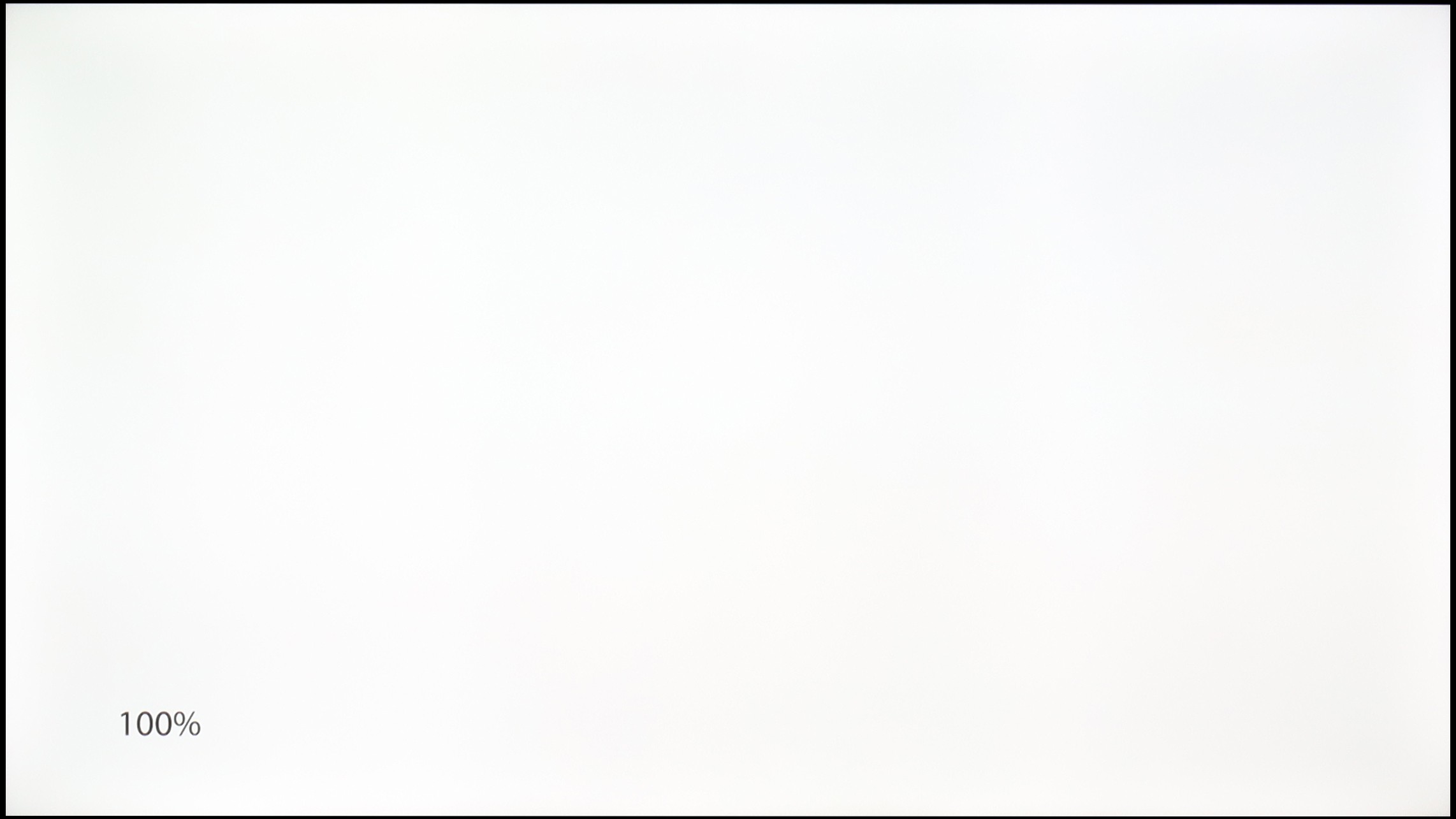
TV features
7.7/10
4.9/10
- HDMI inputs2 x HDMI 2.0, 2 x HDMI 2.1 48Gbps3 x HDMI 2.0, 0 x HDMI 2.1
- Other inputsRCA (Chinch)
- OutputsToslink (Optical audio), eARC (HDMI), ARC (HDMI)Toslink (Optical audio), eARC (HDMI), ARC (HDMI), Mini-Jack (Headphones)
- Network InterfacesWi-Fi 2.4GHz, Wi-Fi 5GHz, Ethernet (LAN) 100MbpsWi-Fi 2.4GHz, Wi-Fi 5GHz, Ethernet (LAN) 100Mbps
- TV receptionDVB-T, DVB-T2, DVB-S, DVB-S2, DVB-CDVB-T, DVB-T2, DVB-S, DVB-S2, DVB-C
Classic features:
- Recording to USB (terrestrial TV)
- Recording programming
- Picture in Picture (PiP)
- RF remote control (no need to aim at the screen)
- Backlit remote control
- Teletext
- Audio only mode
- Possibility to connect Bluetooth headphones to the TV
- Possibility to simultaneously use Bluetooth headphones and the TV speaker
Smart features:
- AirPlay
- Screen mirroring (Windows Miracast)
- Wyszukiwanie głosowe
- Voice search in native language
- Ability to connect a keyboard and mouse


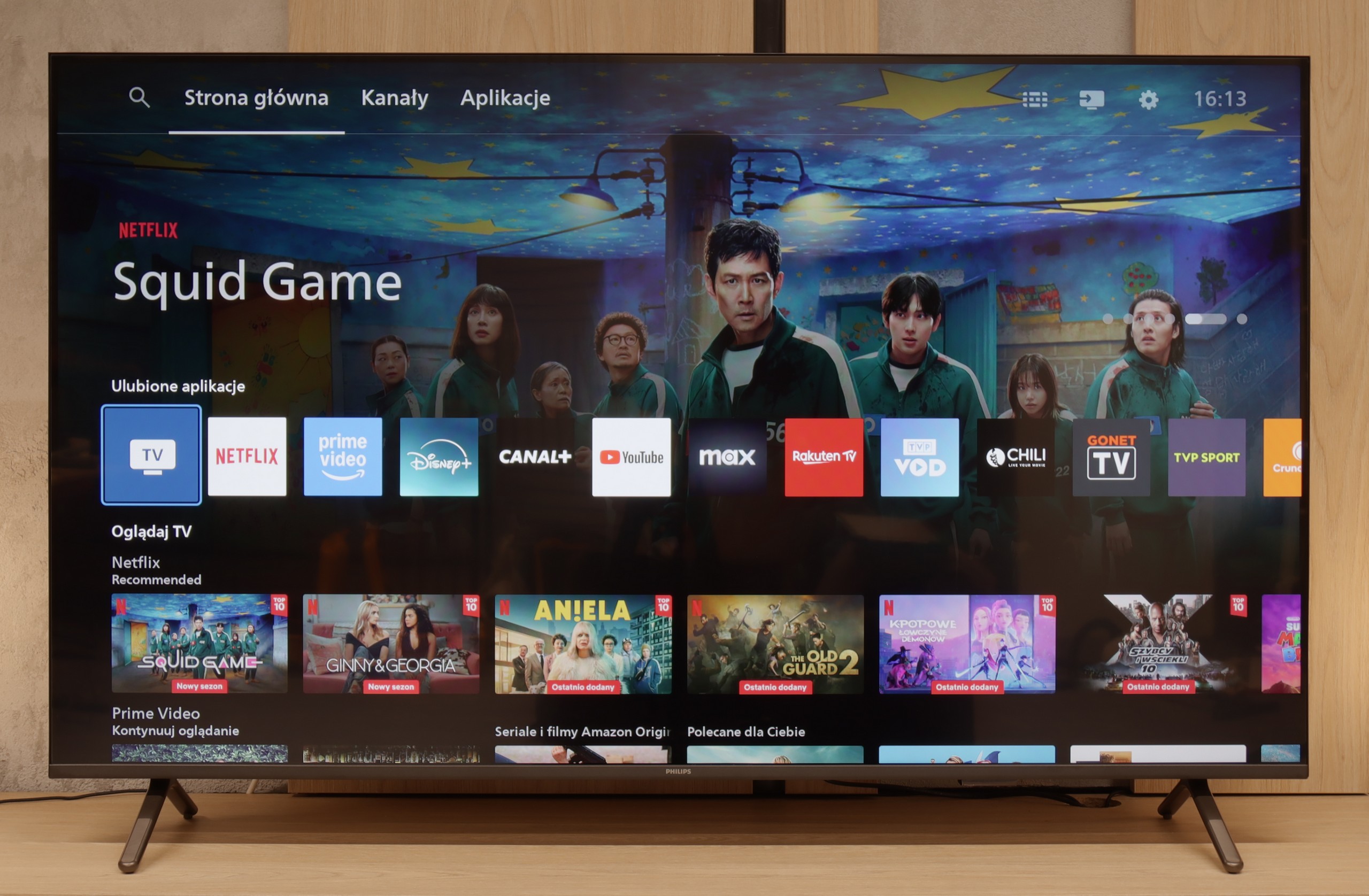
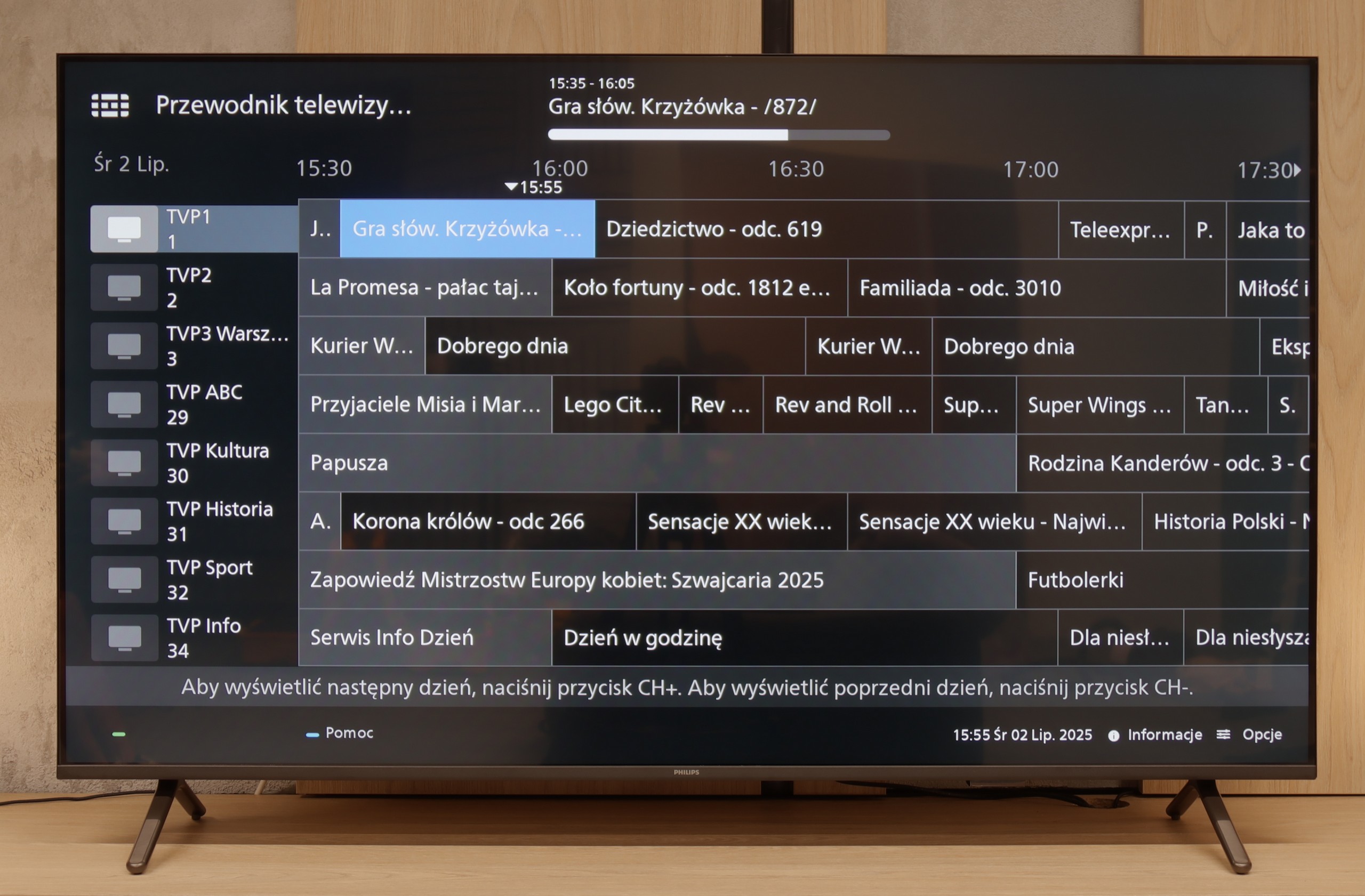
TCL C75B is a television that is primarily based on the Google TV system. The platform offers access to most popular applications, such as Netflix, YouTube, and Prime Video, which makes it great for watching content from the internet. However, it should be mentioned that the system can sometimes be slightly laggy, which may be noticeable during everyday use.
In terms of smart features, the C75B performs well. Voice control with the help of the built-in assistant works efficiently, and thanks to AirPlay and Miracast, it is easy to stream content from your phone or laptop. Bluetooth allows you to connect headphones, controllers, or other devices without any major issues.
However, if someone is counting on traditional television features, they may be disappointed. There is no option to record programmes onto a USB drive, nor is there a picture-in-picture (PiP) feature. TCL has been omitting such features for some time, which may not appeal to users who primarily use traditional television.
Classic TV Features:
If you are looking for a television that "works" in the most basic sense – the PUS8560 will fulfil that role. In terms of classic features, we have a rather minimalist set. On the plus side, there is an electronic programme guide (EPG), teletext, a backlit remote control with a classic numeric keypad, and a headphone jack input. It sounds a bit like a dream set for seniors – and there is some truth to that. However, it must be stated clearly: this is a television with very limited capabilities. We will not find recording functions from DVB tuners to USB here, nor is there a PiP mode or other conveniences known from more expensive models.
Smart TV:
How does the SmartTV perform on the PUS8560? Well, this is where it gets a bit more complicated. The PUS8560 runs on the Titan OS, which in this particular implementation posed significant problems. Some features, although present "on paper," simply did not work. For example: Wireless screen mirroring functions, such as Chromecast or Miracast – we tried to activate them from several different phones and laptops… without success. Perhaps this will be fixed in the future, but at the time of testing – it did not work. Additionally, the system's speed left much to be desired – switching between applications or home screens was simply slow. A considerable portion of the menu functions seems to be well hidden in the depths of a poorly organised system. To make matters worse, the library of available applications is quite limited. Even though the situation with applications is better than last year, it is still far from ideal. The situation tries to be salvaged by a modern remote – slim, elegant, backlit, and really well made. Unfortunately, it operates on classic infrared, so you have to aim it at the screen. The only exception is voice control, which works via Bluetooth… it’s just a pity that it doesn’t support Polish.
Playing files from USB
9.2/10
8/10
Supported photo formats:
Maximum photo resolution:

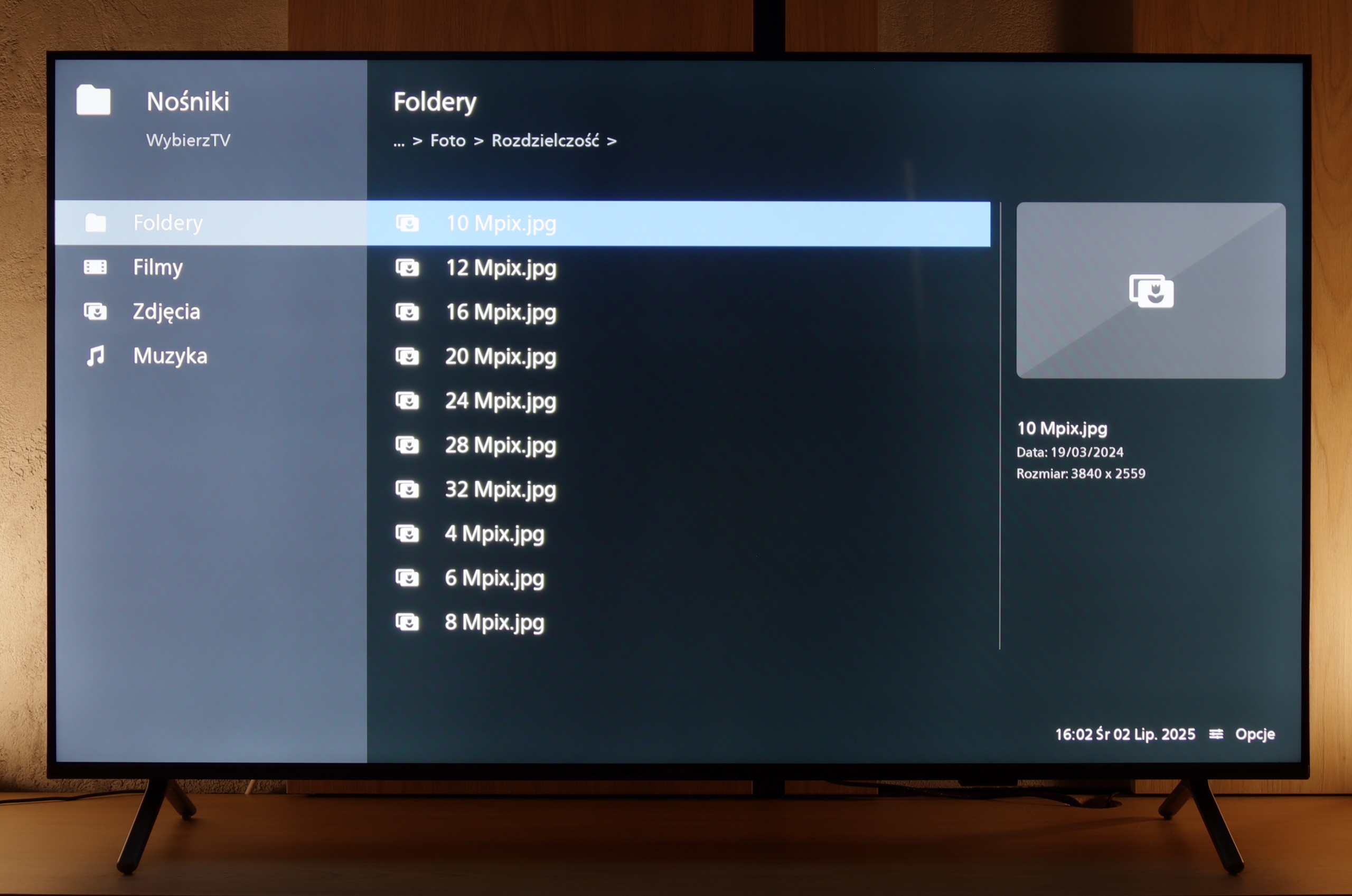
The built-in media player in the TCL C75B works really well. It handles most popular photo and audio formats without any issues. Although there are some shortcomings in supporting certain formats, thanks to Google TV, you can easily install an alternative player that will resolve this issue.
The PUS8560 handles the playback of most popular video and audio formats from a USB memory stick without any major issues, so there’s no point in detailing the compatibilities one by one. In everyday use, it should simply work – and it does. The only thing worth noting is the handling of images. Although the television easily recognises popular file extensions, there are instances when some images simply do not display when the graphic files have very high resolutions. This may not be a huge problem, but it’s good to keep it in mind, especially if we want to view photographs straight from the camera. Apart from that, the PUS8560 shouldn’t pose any significant issues with playing files from USB.
Apps
9.6/10
4.6/10














































Sound
6.6/10
6.2/10
- Subjective sound quality:6.6/106.2/10
- Dolby Digital Plus 7.1:
- Dolby True HD 7.1:
- Dolby Atmos in Dolby Digital Plus (JOC):
- Dolby Atmos in Dolby True HD:
- DTS:X in DTS-HD MA:
- DTS-HD Master Audio:
The sound on the TCL C75B is really pleasant, especially at lower volume levels. The bass is noticeable and enhances the sound nicely, but only up to about 40% volume. At higher settings, problems start to arise – the bass causes unpleasant vibrations, and the speakers begin to crackle. If we plan to frequently use higher volume levels, it is worth considering purchasing a soundbar, as the built-in speakers may not cope with more demanding situations.
The television sounds quite pleasant and can confidently be regarded as having sufficient sound levels for most users – both for watching everyday programmes and for an evening viewing of a series. Moreover, a pleasant surprise is that even in this budget-friendly series, Philips has chosen to acquire licenses for full audio formats such as Dolby Atmos and DTS. This is great news for owners of home cinemas and soundbars, as it means full compatibility and no need to "fiddle around" with connecting external devices.


